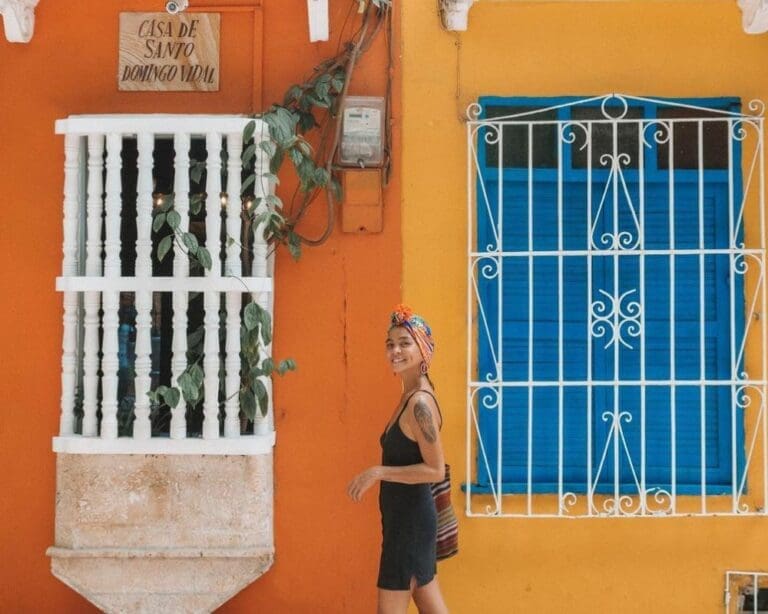Destinations > North America > Mexico
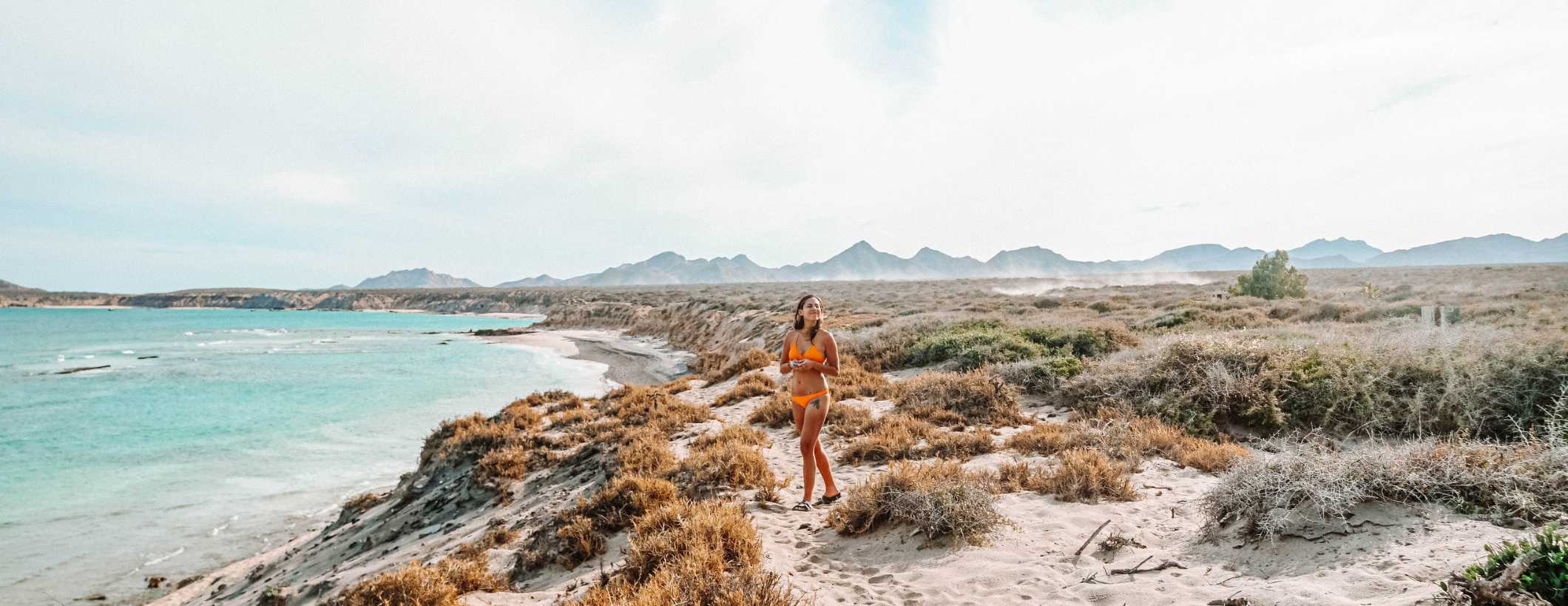
👋 Hola! My name is Trisha and I’ve traveled and have lead group tours to Mexico bseveral times. On my second trip to Mexico in 2018, I ended up living in Mexico full-time so you are in luck! I am now a legal resident in Mexico and have traveler. toall 32 states.
Welcome to our Mexico Travel Guide, your ultimate resource for discovering the vibrant culture, tantalizing cuisine, and breathtaking landscapes of this captivating country! Mexico’s rich history, diverse ecosystems, and warm-hearted people make it a must-visit destination for travelers seeking unforgettable experiences.
From the ancient ruins of Chichen Itza and the bustling metropolis of Mexico City, to the pristine beaches of Cancun and the vibrant street markets of Oaxaca, Mexico offers a plethora of attractions that cater to every taste and interest. In this comprehensive guide, we will take you on a journey through Mexico’s most enchanting regions, uncovering hidden gems and providing insider tips to help you make the most of your visit.
Whether you’re a seasoned explorer looking for your next adventure, a foodie searching for the perfect taco, or a history buff eager to delve into Mexico’s fascinating past, our Mexico Travel Guide is here to inspire, inform, and guide you on your journey through this mesmerizing land.
So pack your bags, dust off your Spanish phrasebook, and get ready to embark on a journey of a lifetime as we unravel the magic and allure of Mexico. ¡Vamos!
🇲🇽 Mexico Travel Guide: quick info


Currency
The currency in Mexico is the Mexican Peso, which is abbreviated as MXN. The symbol for the Mexican Peso is “$”, which can sometimes be written as “MX$” to differentiate it from the US Dollar.
Power Plug
In Mexico, they use power plugs and sockets of type A and type B. These are the same types used in the United States and Canada. The standard voltage in Mexico is 127 volts, and the standard frequency is 60 Hz. If you’re traveling from a country with different plug types or voltage, you may need an adapter or a voltage converter, depending on your electronic devices.
Visa
Whether or not you need a visa to travel to Mexico depends on your nationality and the purpose of your visit. Many tourists from countries such as the United States, Canada, the European Union, and several others do not require a visa for short stays (usually up to 180 days) for tourism, business, or family visits. Instead, they only need a valid passport and a completed Forma Migratoria Múltiple (FMM), which is a tourist permit available upon arrival at the airport or land border crossings.
However, if you are from a country not included in Mexico’s visa exemption list, you must apply for a visa at a Mexican embassy or consulate before traveling. It’s essential to check the specific visa requirements for your nationality and the purpose of your visit through official channels, such as a Mexican embassy or consulate, to ensure you have the correct information and documentation.
Wifi
In Mexico, Wi-Fi connections can be found in many public spaces, such as hotels, restaurants, cafes, shopping malls, and airports. Generally, larger cities and tourist destinations offer better and more reliable Wi-Fi connections, while in smaller towns and rural areas, the availability and quality of Wi-Fi can be limited.
The Wi-Fi speed in Mexico can vary greatly, with some places offering fast and reliable connections while others may have slower speeds or intermittent service. It is worth noting that public Wi-Fi networks might not be as secure as private connections, so it’s a good idea to use a virtual private network (VPN) to protect your data when connecting to public Wi-Fi networks.
If you require a consistent internet connection while traveling in Mexico, consider purchasing a local SIM card with a data plan or using an international roaming plan from your home country, allowing you to access mobile data on your smartphone. Mobile data coverage is generally good in urban areas and along major highways, but it can be less reliable in remote or rural locations.
Language
The official language of Mexico is Spanish, spoken by most of the population. Mexico is a linguistically diverse country, with around 68 recognized indigenous languages spoken by various ethnic groups nationwide. Some of the most widely spoken indigenous languages include Nahuatl, Yucatec Maya, Mixtec, Zapotec, and Tzotzil.
In popular tourist destinations, you may find that English is commonly spoken in hotels, restaurants, and tourist-oriented businesses. However, learning some basic Spanish phrases before traveling to Mexico is always a good idea, as it will help you navigate the country more efficiently and make your experience more enjoyable.
Safety
Mexico is a large and diverse country, and safety can vary depending on the region and the specific circumstances. While some areas of Mexico have experienced high crime, violence, and drug-related incidents in recent years, many parts of the country are safe for travelers. It’s essential to research and stay up-to-date on the current situation in the areas you plan to visit and take necessary precautions to ensure your safety and security while traveling.
The Mexican government has taken significant steps to improve security in recent years, including increasing police presence in tourist areas, implementing surveillance measures, and cracking down on organized crime. Additionally, many popular tourist destinations have their private security measures in place to protect visitors.
🗺️ Mexico Map
✨ Mexico travel tips for first-timers


- Regional differences: Mexico is a vast country with diverse climates, landscapes, and cultures. Research the specific region you’re visiting to understand its unique characteristics and adjust your plans and packing accordingly.
- Understand the siesta: Many businesses, particularly in smaller towns, close for a few hours in the afternoon for a siesta. Plan your daily itinerary around this break to avoid disappointment.
- Try regional specialties: Mexican cuisine varies by region, so be sure to sample the local specialties. For example, try cochinita pibil in Yucatán, pozole in Guerrero, or tlayudas in Oaxaca.
- Use colectivos for local travel: Colectivos are shared minivans or small buses that offer an affordable and authentic transportation option for short distances. They follow set routes and can be flagged down along the way.
- Visit local markets: Experience authentic Mexican culture by visiting local markets, such as the Mercado de la Merced in Mexico City, Mercado Benito Juárez in Oaxaca, or Mercado 28 in Cancun. These markets are great places to shop for souvenirs, try local foods, and practice your Spanish.
- Explore beyond tourist hotspots: While famous sites like Chichén Itzá and Cancún are worth visiting, explore lesser-known destinations like Guanajuato, Puebla, and Chiapas to experience Mexico’s diverse beauty and culture.
- Attend cultural events and festivals: Mexico has a rich calendar of cultural events and festivals, such as Día de Muertos (Day of the Dead), Guelaguetza in Oaxaca, or the International Mariachi Festival in Guadalajara. Plan your trip around these events for an immersive cultural experience.
- Learn about Mexico’s indigenous cultures: Mexico is home to various indigenous cultures, such as the Maya, Zapotec, and Huichol. Visit indigenous villages, participate in local workshops, or attend cultural events to learn more about these unique communities.
- Street food etiquette: When eating street food, follow locals’ lead and use the provided utensils or napkins to handle food instead of using your hands. This practice helps maintain hygiene and shows respect for local customs.
- Visit cenotes in the Yucatán Peninsula: These natural swimming holes, formed by underground rivers, are unique to the region. Popular cenotes include Cenote Ik Kil, Cenote Dos Ojos, and Gran Cenote.
- Use eco-friendly sunscreens: Mexico’s coral reefs and marine life are vulnerable to damage from chemicals found in many sunscreens. Opt for reef-safe, biodegradable sunscreens to minimize your impact on the environment.
- Explore Mexico’s Pueblos Mágicos: These “magical towns” are recognized for their cultural, historical, and natural significance. Examples include Taxco, Valle de Bravo, and San Cristóbal de las Casas.
- Bargaining etiquette: Bargaining is common at markets and some smaller shops in Mexico. Approach negotiations politely and with a smile, and be prepared to walk away if the price isn’t right.
- Discover Mexico’s UNESCO World Heritage Sites: Mexico has 35 UNESCO World Heritage Sites, including the historic centers of Mexico City, Puebla, and Oaxaca, as well as natural wonders like the Monarch Butterfly Biosphere Reserve and the Sian Ka’an Biosphere Reserve.
- Visit mezcalerías and tequilerías: Mexico is famous for its mezcal and tequila. Visit local mezcalerías and tequilerías to learn about the production process, sample different varieties, and appreciate these iconic Mexican spirits.
🌎 Mexico travel blog
Let me help you plan your trip to Mexico!
I live in Mexico and have hosted trips and tours all over the country (all 32 states). Let’s talk on the phone and plan your Mexico travel!
📅 Best time to visit Mexico by month
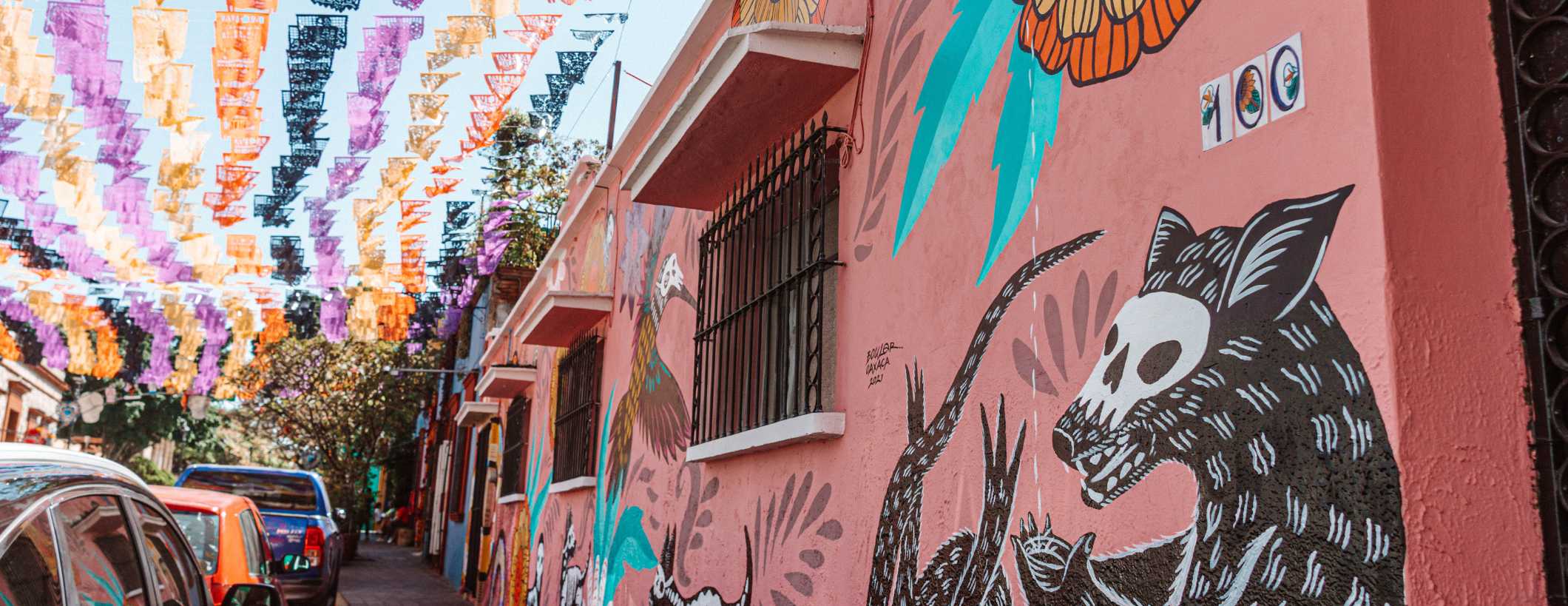

January in Mexico
January is a great time to visit Mexico as the weather remains mild and temperate in most regions of the country. Depending on the region, visitors may experience temperatures ranging from 18°C (64°F) during the day to 11°C (52°F) at night. With this pleasant climate, visitors can enjoy plenty of outdoor activities such as swimming, snorkeling, fishing and more!
January also marks the beginning of Mexico’s dry season in some regions, making it an ideal time for travelers looking to explore without worrying about rain.
The month of January brings several religious festivals including El Dia de Reyes (Three Kings’ Day) on January 6th and El Aniversario de la Constitucion Politica de los Estados Unidos Mexicanos (Anniversary of the Political Constitution of the United Mexican States) on January 5th. Visitors can also find smaller regional celebrations throughout the month.
February in Mexico
February is a great time to visit Mexico as the weather remains mild and temperate in most regions of the country. Depending on the region, visitors may experience temperatures ranging from 18-23°C (64-73°F) during the day to 10-15°C (50-59°F) at night. With this pleasant climate, visitors can enjoy plenty of outdoor activities such as swimming, snorkeling, fishing and more!
February marks the end of Mexico’s dry season in some regions as well as the beginning of its ‘spring break’ season, making it an ideal time for travelers looking to explore without worrying about rain or too many crowds.
The month of February brings several religious festivals including El Dia de la Candelaria (Candlemas Day) on February 2nd and El Aniversario del Instituto Nacional de Antropologia e Historia (Anniversary of the National Institute of Anthropology and History) on February 20th. Visitors can also find smaller regional celebrations throughout the month.
March in Mexico
February is a great time to visit Mexico as the weather begins to warm up in some regions. Depending on the region, visitors may experience temperatures ranging from 20°C (68°F) during the day to 12°C (54°F) at night. With this pleasant climate, visitors can enjoy plenty of outdoor activities such as swimming, snorkeling, fishing and more!
February marks the beginning of spring in most parts of Mexico, making it an ideal time for travelers looking to explore outside without worrying about rain.
The month of February brings several religious festivals including El Dia de la Candelaria (Candlemas Day) on February 2nd and El Aniversario de la Constitucion Politica de los Estados Unidos Mexicanos (Anniversary of the Political Constitution of the United Mexican States) on February 5th. Visitors can also find smaller regional celebrations throughout the month.
Shopping centers offer discounts on clothing and electronics throughout Mexico, so now is a great time to pick up souvenirs or gifts for your family and friends back home! With its beautiful scenery, mild temperatures and wide variety of activities available, February in Mexico is an ideal time for exploring this amazing country!
March is a great time to visit Mexico as many regions experience warm seasonal weather. Depending on the region, visitors may experience temperatures ranging from 22°C (72°F) during the day to 14°C (57°F) at night. With this pleasant climate, visitors can enjoy plenty of outdoor activities such as swimming, snorkeling, fishing and more!
March marks the peak season in many parts of Mexico so there are plenty of events taking place throughout the month. Visitors can attend traditional fiestas celebrating local customs and history or visit smaller regional celebrations like El Aniversario de la Toma de Mazatlan en 1864 (The Anniversary of Mazatlan’s Capture in 1864).
April in Mexico
April is a great time to visit Mexico as the weather continues to warm up in most regions. Depending on the region, visitors may experience temperatures ranging from 24-27°C (75-81°F) during the day to 16-19°C (61-66°F) at night. With this pleasant climate, visitors can enjoy plenty of outdoor activities such as swimming, snorkeling, fishing and more!
April marks the start of summertime in many parts of Mexico and is a great time for travelers looking to explore without worrying about rain or too many crowds.
The month of April brings several religious festivals including El Dia de la Pascua (Easter Day) on April 4th and El Aniversario de La Batalla de Cerro del Borrego (The Anniversary of the Battle of Cerro del Borrego) on April 17th. Visitors can also find smaller regional celebrations throughout the month.
May in Mexico
May is an ideal time to visit Mexico as the weather begins to warm up in most regions. Depending on the region, visitors may experience temperatures ranging from 26-30°C (79-86°F) during the day to 18-22°C (64-72°F) at night. With this pleasant climate, visitors can enjoy plenty of outdoor activities such as swimming, snorkeling, fishing and more!
May marks the start of summertime in many parts of Mexico so there are plenty of events taking place throughout the month. Visitors can attend traditional fiestas celebrating local customs and history or visit smaller regional celebrations like El Dia de la Virgen de Guadalupe (Day of The Virgin of Guadalupe) on May 3rd.
June in Mexico
May is a great time to visit Mexico as temperatures start to heat up in many regions. Depending on the region, visitors may experience temperatures ranging from 27-30°C (81-86°F) during the day to 19-22°C (66-72°F) at night. With this pleasant climate, visitors can enjoy plenty of outdoor activities such as swimming, snorkeling, fishing and more!
May marks the beginning of high season in many parts of Mexico so travelers should expect crowds in popular areas.
The month of May brings several religious festivals including El Dia de la Cruz (Cross Day) on May 3rd and El Aniversario de la Captura de Tlatelolco en 1521 (The Anniversary of the Capture of Tlatelolco in 1521) on May 13th. Visitors can also find smaller regional celebrations throughout the month.
Shopping centers offer discounts on clothing and electronics throughout Mexico so now is a great time to pick up souvenirs or gifts for your family and friends back home! With its beautiful scenery, mild temperatures and wide variety of activities available, May in Mexico is an ideal time for exploring this amazing country!
June is a great time to visit Mexico as summertime arrives in most regions. Depending on the region, visitors may experience temperatures ranging from 30-33°C (86-91°F) during the day to 22-25°C (72-77°F) at night. With this pleasant climate, visitors can enjoy plenty of outdoor activities such as swimming, snorkeling, fishing and more!
June marks the peak season in many parts of Mexico so travelers should expect crowds in popular tourist areas.
The month of June brings several religious festivals including El Dia del Sagrado Corazon Jesu (Day of the Sacred Heart of Jesus) on June 16th and El Aniversario de la Noche Triste en 1520 (the Anniversary of La Noche Triste in 1520). Visitors can also find smaller regional celebrations throughout the month.
July in Mexico
July is an ideal time to visit Mexico as the weather remains warm and sunny in most regions. Depending on the region, visitors may experience temperatures ranging from 28-32°C (82-90°F) during the day to 19-23°C (66-73°F) at night. With this pleasant climate, visitors can enjoy plenty of outdoor activities such as swimming, snorkeling, fishing and more!
July marks the peak of summertime in many parts of Mexico so there are plenty of events taking place throughout the month. Visitors can attend traditional fiestas celebrating local customs and history or visit regional festivals like El Dia de la Virgen del Carmen (Day of The Virgin of Carmen), which is celebrated on July 16th.
August in Mexico
August is a great time to visit Mexico as temperatures remain warm in many regions. Depending on the region, visitors may experience temperatures ranging from 28-32°C (82-90°F) during the day to 21-25°C (70-77°F) at night. With this pleasant climate, visitors can enjoy plenty of outdoor activities such as swimming, snorkeling, fishing and more!
August marks the height of summertime in many parts of Mexico so travelers should expect crowds in popular tourist areas.
The month of August brings several religious festivals including El Dia de la Asuncion de la Virgen (Day of The Assumption of the Virgin) on August 15th and El Aniversario de Tenochtitlan 1428 (the Anniversary of Tenochtitlan 1428). Visitors can also find smaller regional celebrations throughout the month.
Shopping centers offer discounts on clothing and electronics throughout Mexico so now is a great time to pick up souvenirs or gifts for your family and friends back home! With its beautiful scenery, mild temperatures and wide variety of activities available, August in Mexico is an ideal time for exploring this amazing country!
September in Mexico
September is a great time to visit Mexico as temperatures cool in many regions. Depending on the region, visitors may experience temperatures ranging from 27-30°C (81-86°F) during the day to 19-22°C (66-72°F) at night. With this pleasant climate, visitors can enjoy plenty of outdoor activities such as swimming, snorkeling, fishing and more!
September marks the beginning of high season in many parts of Mexico so travelers should expect crowds in popular areas.
The month of September brings several religious festivals including El Dia de los Muertos (Day Of The Dead) on September 1st and El Aniversario de la Grito de Dolores en 1810 (The Anniversary Of The Cry Of Dolores In 1810). Visitors can also find smaller regional celebrations throughout the month.
October in Mexico
October is a great time to visit Mexico as temperatures begin to cool down in many regions. Depending on the region, visitors may experience temperatures ranging from 25-28°C (77-82°F) during the day to 17-20°C (63-68°F) at night. With this pleasant climate, visitors can enjoy plenty of outdoor activities such as swimming, snorkeling, fishing and more!
October marks the beginning of high season in many parts of Mexico so travelers should expect crowds in popular areas.
The month of October brings several religious festivals including El Dia de la Raza (Columbus Day) on October 12th and El Aniversario de la Independencia de Mexico en 1810 (The Anniversary Of The Independence Of Mexico In 1810). Visitors can also find smaller regional celebrations throughout the month.
November in Mexico
November is a great time to visit Mexico as temperatures continue to cool in many regions. Depending on the region, visitors may experience temperatures ranging from 22-26°C (72-79°F) during the day to 16-20°C (61-68°F) at night. With this pleasant climate, visitors can enjoy plenty of outdoor activities such as swimming, snorkeling, fishing and more!
November marks the beginning of the low season in many parts of Mexico so travelers should expect crowds in popular areas to be smaller.
The month of November brings several religious festivals including El Dia de Todos los Santos (All Saints’ Day) on November 1st and El Aniversario de la Revolucion Mexicana en 1910 (The Anniversary Of The Mexican Revolution In 1910). Visitors can also find smaller regional celebrations throughout the month.
December in Mexico
December is a great time to visit Mexico as temperatures continue to cool in many regions. Depending on the region, visitors may experience temperatures ranging from 15-21°C (59-70°F) during the day to 8-14°C (46-57°F) at night. With this pleasant climate, visitors can enjoy plenty of outdoor activities such as hiking, biking, and exploring archaeological sites.
December marks the end of the low season in many parts of Mexico so travelers should expect crowds in popular areas to be smaller.
The month of December brings several religious festivals including El Dia de la Virgen de Guadalupe (Day of The Virgin Of Guadalupe) on December 12th and El Aniversario de las Estrellas (The Anniversary Of The Stars). Visitors can also find smaller regional celebrations throughout the month.
☀️ Weather in Mexico by season
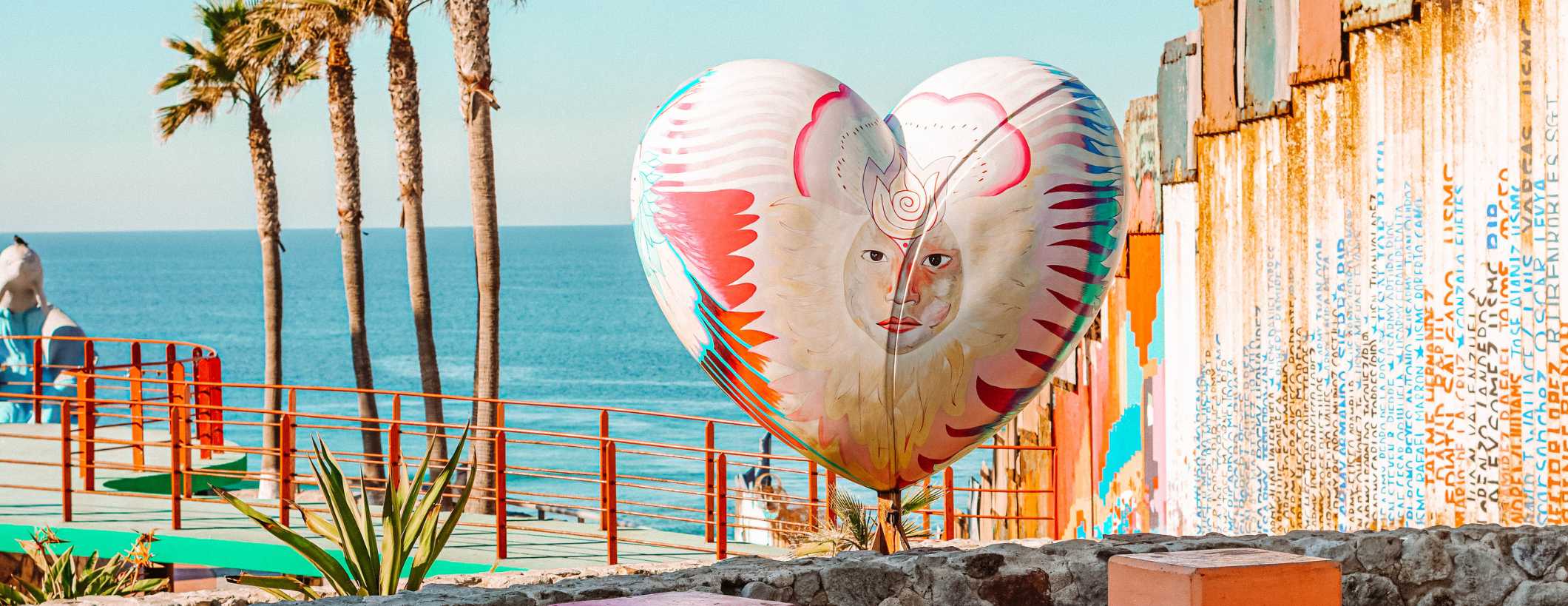

Winter in Mexico
Winter is an excellent time to visit Mexico as it experiences a dry and mild climate. Depending on the region, visitors may experience temperatures ranging from 10-20°C (50-68°F) during the day to 5-10°C (41-50°F) at night. With this pleasant climate, visitors can enjoy plenty of outdoor activities such as skiing, snowboarding and exploring archaeological sites.
The winter season in many parts of Mexico brings some of the highest levels of tourism. Travelers should expect larger crowds in popular areas throughout the season.
The months of December and January bring several religious festivals including El Dia de Navidad (Christmas Day) on December 25th and Reyes Magos (Three Kings’ Day) on January 6th. Visitors can also find smaller regional celebrations throughout the season.
Spring in Mexico
Spring is an excellent time to visit Mexico as temperatures start to rise and the days become longer. Depending on the region, visitors may experience temperatures ranging from 20-25°C (68-77°F) during the day to 10-15°C (50-59°F) at night. With this pleasant climate, visitors can enjoy plenty of outdoor activities such as swimming, sunbathing, and exploring archaeological sites.
The spring season in many parts of Mexico brings some of the highest levels of tourism. Travelers should expect larger crowds in popular areas throughout the season.
The months of April and May bring several religious festivals including El Dia del Niño (Children’s Day) on April 30th and El Día de Nuestra Señora de la Salud (Our Lady Of Health Day) on May 10th. Visitors can also find smaller regional celebrations throughout the season.
Summer in Mexico
Summer is an excellent time to visit Mexico as temperatures reach their highest. Depending on the region, visitors may experience temperatures ranging from 30-35°C (86-95°F) during the day to 15-20°C (59-68°F) at night. With this warm climate, visitors can enjoy plenty of outdoor activities such as swimming, fishing and exploring archaeological sites.
The summer season in many parts of Mexico brings some of the highest levels of tourism. Travelers should expect larger crowds in popular areas throughout the season.
The months of June and July bring several religious festivals including El Dia de la Independencia (Independence Day) on September 16th and El Día de Nuestra Señora de Guadalupe (Our Lady Of Guadalupe Day) on December 12th. Visitors can also find smaller regional celebrations throughout the season.
Fall in Mexico
Fall is an excellent time to visit Mexico as temperatures remain mild and the days are still long. Depending on the region, visitors may experience temperatures ranging from 20-28°C (68-82°F) during the day to 10-15°C (50-59°F) at night. With this pleasant climate, visitors can enjoy plenty of outdoor activities such as swimming, hiking and exploring archaeological sites.
The fall season in many parts of Mexico brings some of the highest levels of tourism. Travelers should expect larger crowds in popular areas throughout the season.
The months of September and October bring several religious festivals including El Grito de Independencia (Independence Day) on September 16th and El Día de Muertos (Day Of The Dead) on November 1st. Visitors can also find smaller regional celebrations throughout the season.
🚍 Getting around Mexico


Mexico offers a wide range of transportation options for travelers, making it easy to explore the country’s diverse regions and cities. Here’s a comprehensive guide to help you navigate the various modes of transportation available in Mexico.
- Air travel: Domestic flights are a convenient and time-saving way to travel between major cities in Mexico. The main airlines operating within the country include Aeromexico, Volaris, and VivaAerobus. Booking flights in advance and during off-peak seasons can help you find the best deals.
- Bus travel: Mexico has an extensive and reliable bus network, with first-class and luxury buses available for intercity travel. These buses offer comfortable seating, air conditioning, and onboard restrooms. Major bus companies include ADO, Primera Plus, and ETN. It’s advisable to book your tickets in advance, either online or at the bus station.
- Car rental: Renting a car in Mexico can offer flexibility and freedom to explore the country at your own pace. Many international and local car rental agencies operate throughout Mexico, such as Hertz, Avis, and Europcar. Be sure to have a valid driver’s license, passport, and credit card. Keep in mind that traffic conditions, road quality, and driving habits in Mexico can differ from your home country, so exercise caution and familiarize yourself with local road rules.
- Taxis: Taxis are widely available in cities and towns across Mexico. Always use authorized taxi services, which their distinctive markings and colors can identify. Negotiating the fare before starting your journey or ensuring the taxi has a working meter is best. Ridesharing apps like Uber and Didi are also popular and can offer a safer and more convenient alternative to traditional taxis.
- Colectivos: Colectivos are shared minivans or small buses that follow set routes and charge a fixed fare. They offer an affordable and authentic mode of transportation for short distances within cities and towns. To catch a colectivo, wait along its route and flag it down when it approaches.
- Public transportation: In larger cities like Mexico City, Guadalajara, and Monterrey, public transportation systems such as buses, trolleybuses, and metro networks are available. The Mexico City Metro is an efficient and affordable way to navigate the city, with 12 lines covering most areas of interest. Be mindful of your belongings and avoid traveling during peak hours to minimize the risk of pickpocketing.
- Suburban trains: Suburban trains connect some cities and towns within specific regions, such as the Tren Suburbano in the Mexico City metropolitan area. These trains offer a convenient and relatively fast mode of transportation for commuters and travelers alike.
- Ferries: Ferries and water taxis are essential for traveling to some of Mexico’s islands and coastal destinations, such as Isla Mujeres, Cozumel, and the Baja California Peninsula. Ferry services can vary from small passenger boats to larger car ferries, with schedules and fares depending on the route and operator.
- Biking: Some cities, like Mexico City and Guadalajara, have embraced bike-sharing programs and dedicated bike lanes, making cycling a viable transportation option. Bike rentals and guided bike tours are also available in various tourist destinations, offering an eco-friendly way to explore the local area.
- Walking: In many Mexican cities and towns, walking can be an enjoyable and efficient way to explore the local sights, particularly in historic centers and pedestrianized areas. Be sure to wear comfortable shoes, carry water, and apply sunscreen during the day.
📍 Places to visit in Mexico
Mexico City
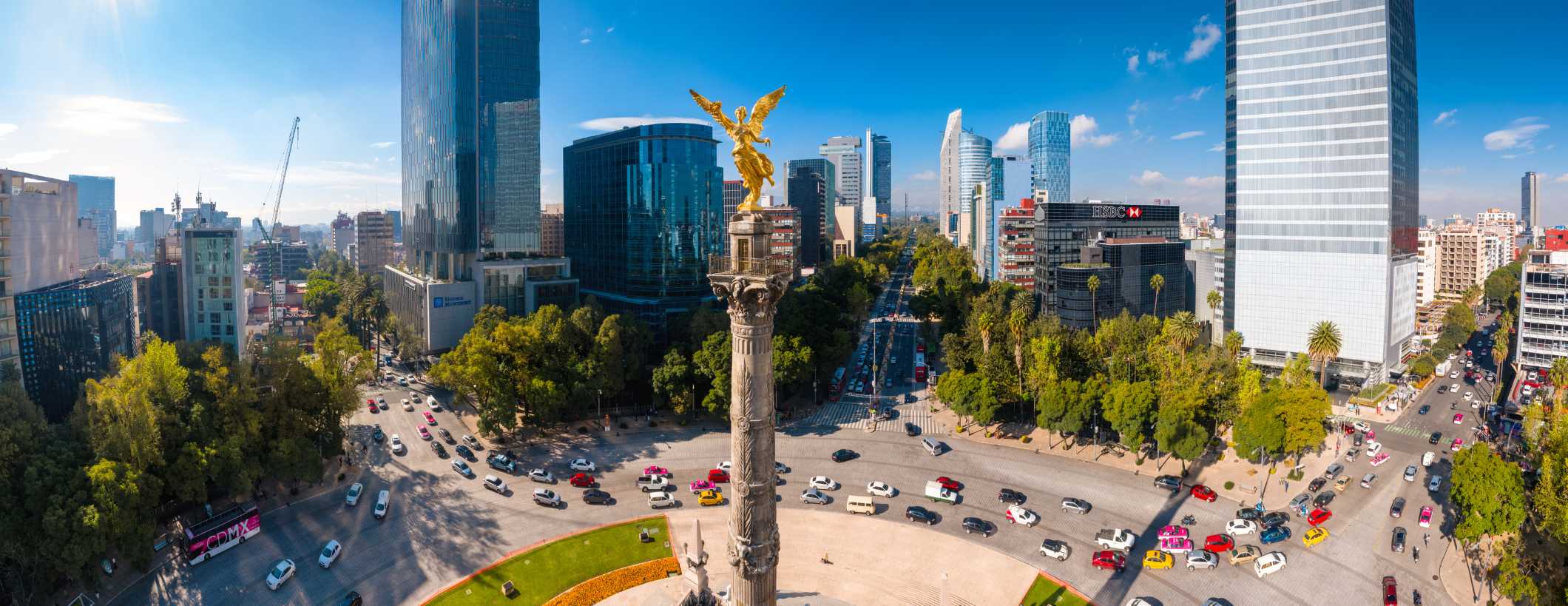

Mexico City, the vibrant capital of Mexico, is a treasure trove of history, culture, and gastronomy that any traveler should not miss. The city boasts an incredible array of world-class museums, such as the National Museum of Anthropology, which houses an extensive collection of pre-Columbian art and artifacts, and the Frida Kahlo Museum, dedicated to the life and work of the iconic Mexican artist. Mexico City is also home to numerous historical sites, including the ancient Aztec city of Teotihuacan with its awe-inspiring Pyramids of the Sun and Moon, and the historic center of the city, a UNESCO World Heritage Site filled with colonial-era architecture and the magnificent Metropolitan Cathedral.
One of the primary reasons to visit Mexico City is its renowned culinary scene. The city offers an exciting mix of traditional Mexican cuisine and innovative fusion dishes, with everything from bustling street food stalls to high-end restaurants led by acclaimed chefs. The city’s markets, such as the famous La Merced Market, provide a unique opportunity to sample local delicacies and fresh produce while immersing oneself in the colorful and lively atmosphere.
Mexico City’s thriving arts and culture scene is another major draw for visitors. The city is home to numerous theaters, galleries, and cultural centers that showcase a diverse range of local and international talent. In addition, Mexico City hosts multiple festivals and events throughout the year, such as the Day of the Dead celebrations and the International Contemporary Film Festival, offering visitors a chance to experience the city’s vibrant cultural life firsthand.
Regarding natural beauty, Mexico City is surrounded by stunning landscapes, including the nearby Desierto de los Leones National Park and the picturesque canals of Xochimilco, where visitors can take a leisurely boat ride through the ancient waterways. Furthermore, the city’s numerous parks and green spaces, such as Chapultepec Park, provide a welcome respite from the bustling urban environment.
Lastly, Mexico City is known for its warm and welcoming people, who are eager to share their rich culture and history with visitors. The city’s diverse neighborhoods, each with its unique charm and character, offer countless opportunities to explore and connect with locals, making a trip to Mexico City an unforgettable experience.
Los Cabos
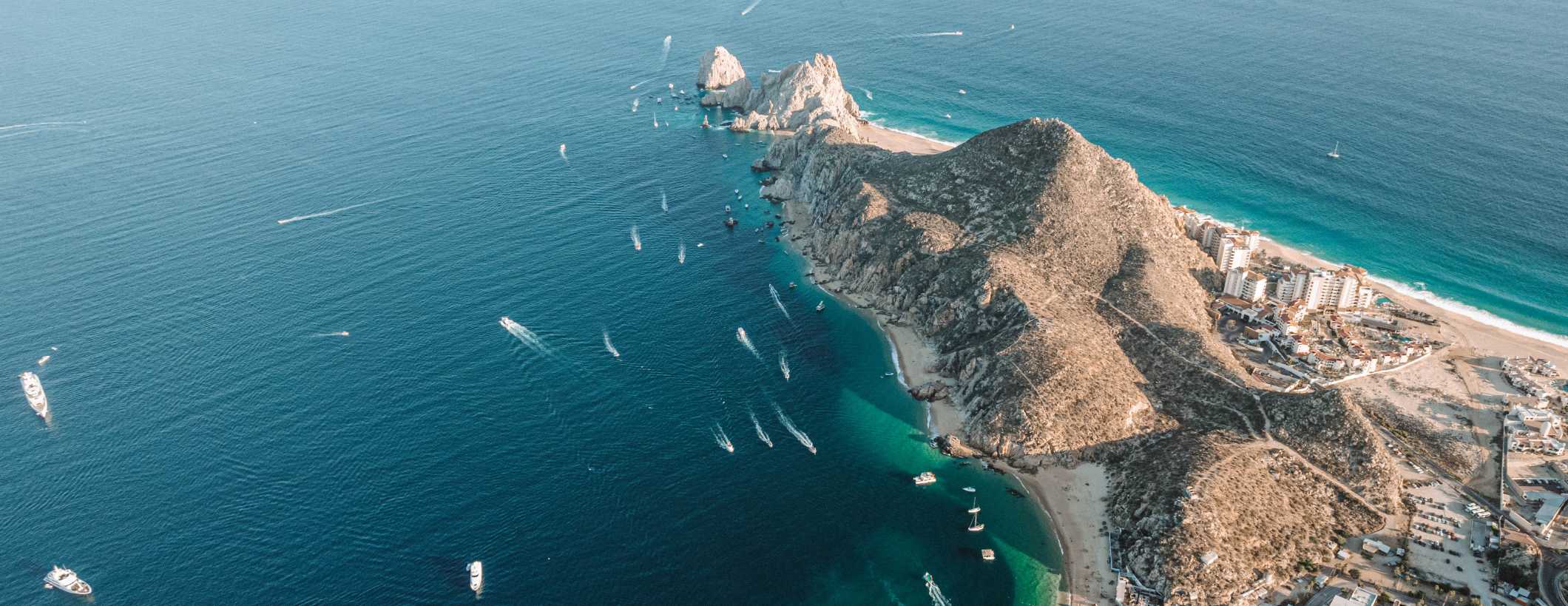

Los Cabos, situated at Mexico’s Baja California Sur, is a premier destination for travelers seeking a perfect blend of relaxation, adventure, and natural beauty. The region, comprising the towns of Cabo San Lucas and San Jose del Cabo, is renowned for its stunning beaches, crystal-clear waters, and spectacular desert landscapes. Visitors can unwind on the pristine shores, soaking in the sun, and enjoying the gentle sea breeze, or take part in various water sports, such as snorkeling, scuba diving, and surfing, in the warm, inviting waters of the Sea of Cortez.
For adventure enthusiasts, Los Cabos offers an array of exciting activities that showcase the region’s unique landscapes. These include off-road desert excursions, zip-lining through the rugged canyons, and even swimming with whale sharks in the nearby waters. The area is also a world-class sportfishing destination, attracting anglers from around the globe to try to catch marlin, tuna, and other prized game fish.
Los Cabos is not just about its natural beauty and outdoor activities but also home to a vibrant arts and cultural scene. San Jose del Cabo’s Art District features numerous galleries and studios where visitors can admire and purchase works by local and international artists. The town also hosts a weekly Art Walk during the high season, offering a delightful evening of art, music, and refreshments. In addition, both Cabo San Lucas and San Jose del Cabo boast a range of dining options, from casual beachside taco stands to upscale restaurants, where travelers can savor the flavors of traditional Mexican cuisine and fresh seafood.
Golf enthusiasts will find Los Cabos particularly appealing, as the region is home to several world-class golf courses designed by renowned architects, such as Jack Nicklaus and Tom Fazio. These courses offer challenging play and stunning views, making for an unforgettable golfing experience. Furthermore, the region’s luxury resorts and spas provide a variety of pampering treatments and amenities, ensuring a relaxing and rejuvenating stay for visitors.
Puerto Vallarta
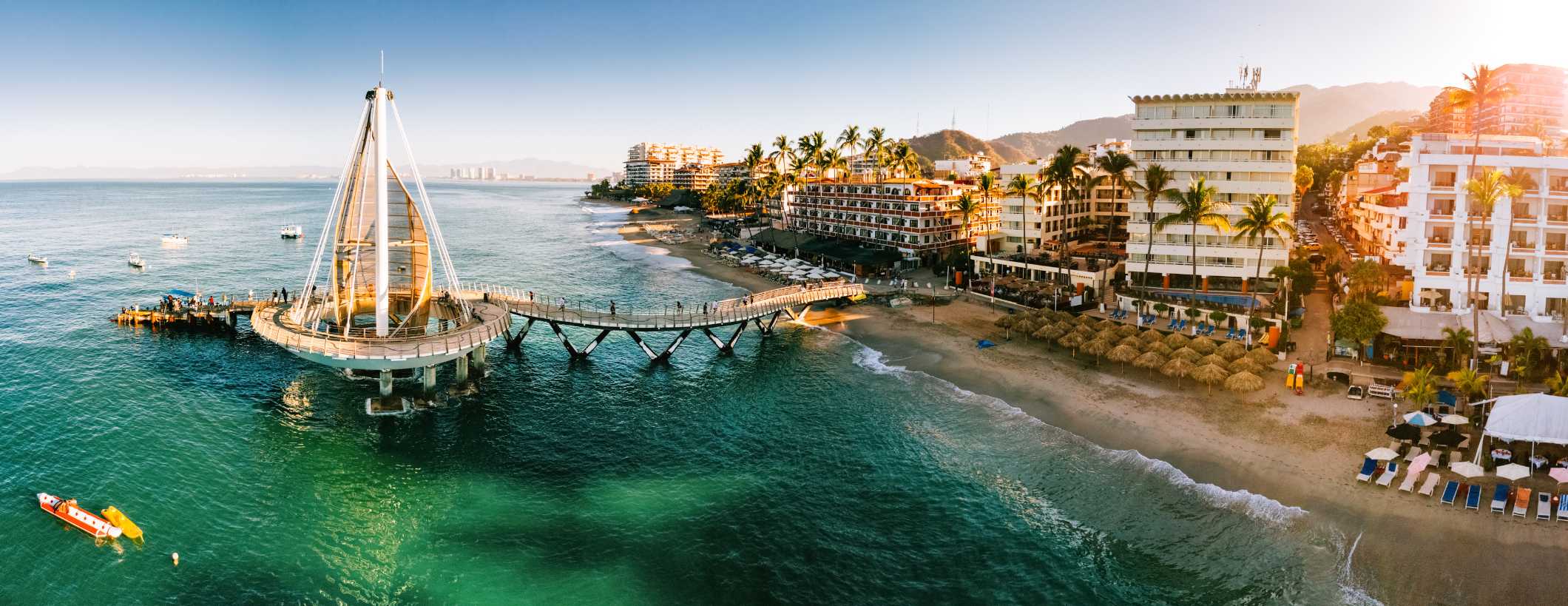

Puerto Vallarta, nestled along the Pacific coast of Mexico in the picturesque Banderas Bay, is a captivating destination with a unique blend of natural beauty, cultural charm, and vibrant nightlife. The town is renowned for its stunning sandy beaches, framed by lush tropical mountains, where visitors can relax, sunbathe, and swim in the warm, azure waters. Water sports enthusiasts will find plenty to do in Puerto Vallarta, with opportunities for snorkeling, scuba diving, and sailing readily available and seasonal whale watching tours to observe the magnificent humpback whales that visit the bay each year.
The heart of Puerto Vallarta lies in its enchanting cobblestone streets, colorful buildings, and lively plazas, which give the town its distinct character and atmosphere. The historic downtown area, known as El Centro, is home to the iconic Church of Our Lady of Guadalupe and the bustling Malecon, a scenic oceanfront promenade dotted with statues, shops, and restaurants. Exploring these charming streets, visitors can discover a thriving arts scene, with numerous galleries featuring works by local and international artists, and can participate in the weekly ArtWalk during the high season for a delightful cultural experience.
Puerto Vallarta is also a gastronomic paradise, boasting a diverse array of dining options that cater to all tastes and budgets. From casual street food stalls serving delicious tacos to fine dining establishments showcasing innovative fusion cuisine, the town is a delight for food lovers. The culinary scene extends to the town’s lively nightlife, with an assortment of bars, clubs, and lounges offering live music, dancing, and expertly crafted cocktails.
Nature lovers will appreciate the abundance of outdoor activities available in and around Puerto Vallarta, such as hiking and birdwatching in the nearby Sierra Madre mountains or exploring the Marietas Islands, a protected marine reserve that is home to diverse wildlife, including the famous hidden beach, Playa del Amor. Additionally, the region offers several world-class golf courses set against stunning backdrops for those looking to enjoy a round or two.
In essence, Puerto Vallarta is a captivating destination that offers a little bit of everything for travelers. With its spectacular natural surroundings, rich cultural heritage, tantalizing culinary scene, and array of activities, it is no wonder that visitors are drawn to this alluring Mexican paradise.
Oaxaca City


Oaxaca City, the capital of the southern Mexican state of Oaxaca, is a destination that enthralls travelers with its rich history, vibrant culture, and distinctive gastronomy. The city’s historic center, a UNESCO World Heritage Site, is a treasure trove of beautifully preserved colonial architecture, including the stunning Santo Domingo Church and the grand Oaxaca Cathedral. Wandering through the cobblestone streets and bustling squares, visitors will encounter a lively atmosphere infused with the city’s indigenous heritage, which is evident in its colorful markets, local crafts, and vibrant festivals.
One of the primary reasons to visit Oaxaca City is its renowned culinary scene, which is deeply rooted in tradition and features an array of unique regional ingredients. The city is famous for its mole, a complex and flavorful sauce that comes in several varieties, as well as its tlayudas, large crispy tortillas topped with an assortment of ingredients. The local markets, such as the Mercado Benito Juárez and Mercado 20 de Noviembre, offer a sensory feast where travelers can sample traditional dishes, fresh produce, and fragrant spices, as well as shop for local handicrafts like textiles and pottery.
Oaxaca City is also home to a thriving arts community, with numerous galleries and workshops showcasing the works of local and international artists. The city’s museums, such as the Museum of Oaxacan Cultures and the Textile Museum of Oaxaca, provide fascinating insights into the region’s rich history and artistic heritage. Throughout the year, Oaxaca City hosts various cultural events and celebrations, including the vibrant Guelaguetza festival, which showcases traditional dance, music, and costumes from the different regions of Oaxaca.
Surrounding Oaxaca City are several impressive archaeological sites that offer a glimpse into the area’s ancient past. The most famous of these is Monte Albán, a former Zapotec capital that boasts well-preserved ruins, including temples, tombs, and plazas, set against a breathtaking backdrop of mountains and valleys. Another nearby site worth visiting is Mitla, known for its intricate and ornate stone mosaics.
Cancun
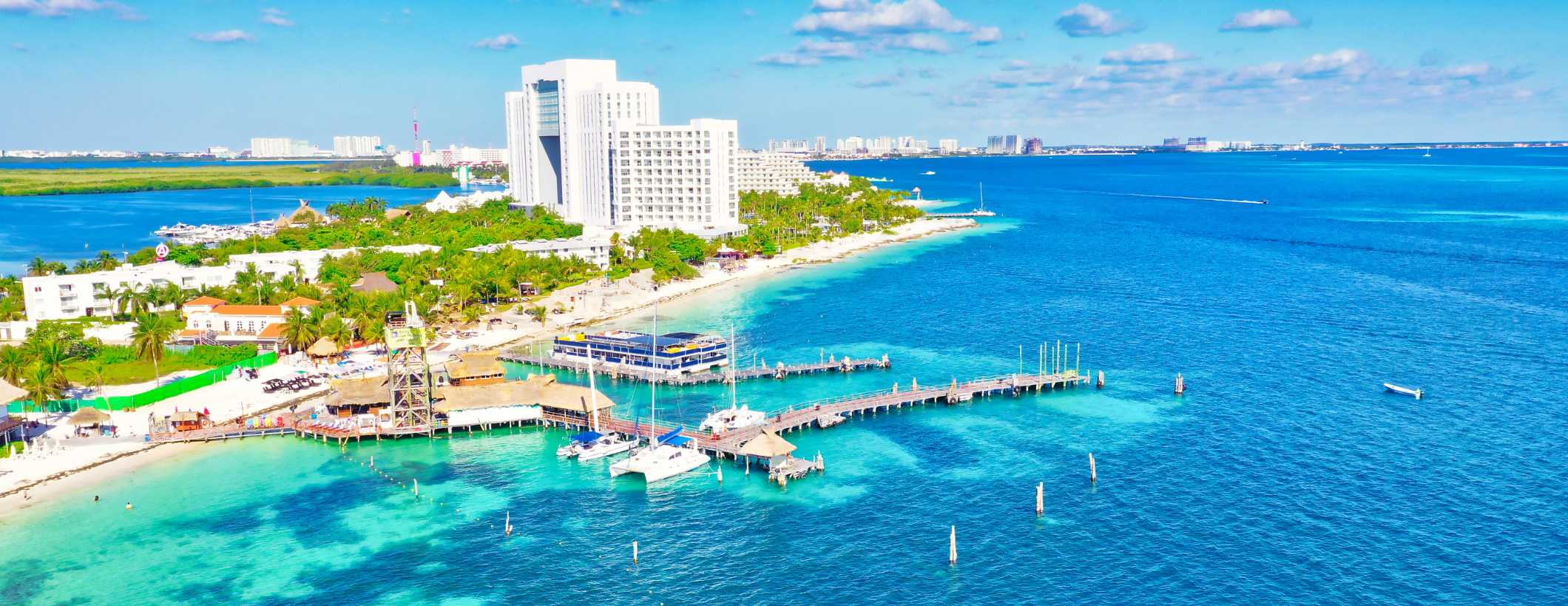

Cancun, located on the northeastern coast of Mexico’s Yucatan Peninsula, is a world-renowned travel destination that offers a perfect blend of natural beauty, cultural attractions, and modern amenities. Known for its stunning white-sand beaches and crystal-clear turquoise waters, Cancun provides an idyllic setting for relaxation and recreation. Visitors can enjoy a range of water sports, such as swimming, snorkeling, scuba diving, and jet-skiing, or simply soak up the sun on the pristine shores.
One of Cancun’s main draws is its proximity to the Mesoamerican Barrier Reef, the second-largest coral reef system in the world. The reef offers exceptional opportunities for snorkeling and scuba diving, with an abundance of colorful marine life and unique underwater landscapes to explore. Additionally, the region is home to several mesmerizing cenotes, natural freshwater sinkholes that provide a unique and refreshing swimming experience amid the lush jungle surroundings.
Cancun is not just about beachside relaxation; it also serves as a gateway to the rich history and culture of the Yucatan Peninsula. The nearby archaeological sites of Tulum, Coba, and the world-famous Chichen Itza offer fascinating insights into the ancient Mayan civilization, with well-preserved temples, pyramids, and other structures that captivate the imagination. Moreover, Cancun’s thriving hotel zone is home to numerous cultural attractions, including the Mayan Museum of Cancun and the El Rey Ruins.
The city’s culinary scene is another reason to visit Cancun, with a diverse range of dining options that cater to all tastes and budgets. From casual beachfront taco joints to upscale restaurants offering gourmet international cuisine, Cancun is a delight for food lovers. The city’s vibrant nightlife is also a major draw, with an assortment of bars, clubs, and entertainment venues providing endless options for a memorable night out.
Cancun is well-equipped to cater to all types of travelers, with accommodations ranging from budget-friendly hostels to luxurious all-inclusive resorts. With its modern infrastructure, excellent connectivity, and array of activities and attractions, Cancun is an ideal destination for those seeking a fun, relaxing, and culturally enriching vacation in a breathtaking tropical setting.
Tulum
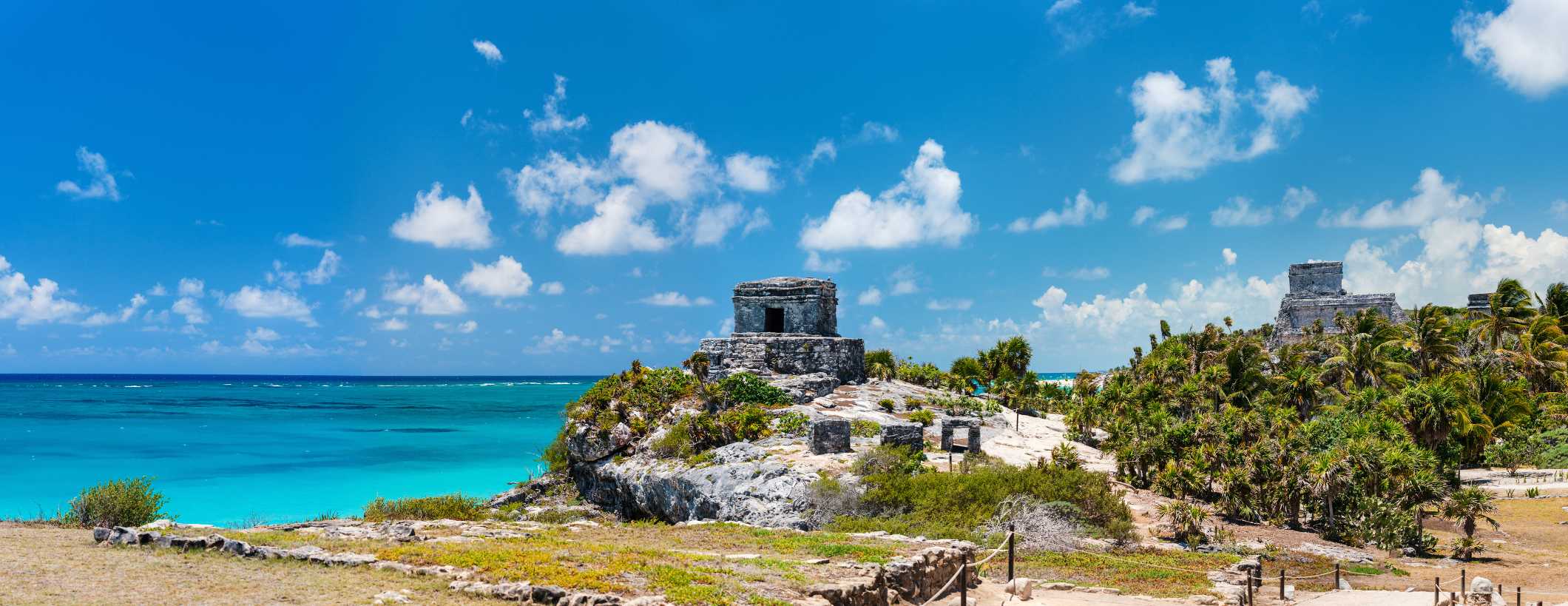

Tulum, situated along the southeastern coast of Mexico’s Yucatan Peninsula, is a captivating destination that offers an alluring mix of natural beauty, ancient history, and laid-back charm. With its pristine white-sand beaches, turquoise waters, and swaying palm trees, Tulum provides a picturesque setting for relaxation and rejuvenation. Visitors can bask in the sun, swim in the warm Caribbean waters, or explore the nearby coral reefs through snorkeling or scuba diving excursions.
One of Tulum’s most iconic attractions is its eponymous archaeological site, perched on a cliff overlooking the azure sea. This well-preserved Mayan city, with its striking El Castillo temple and other intriguing structures, offers a fascinating glimpse into the region’s ancient past while providing stunning views of the surrounding landscape. In addition to the Tulum ruins, the area is home to several other archaeological sites, such as Coba and Muyil, which can be easily explored on day trips from Tulum.
The natural wonders of Tulum extend beyond its stunning coastline. The region is known for its extensive network of cenotes, natural sinkholes filled with crystal-clear freshwater. These hidden gems, nestled within the lush jungle, offer unique opportunities for swimming, snorkeling, or simply marveling at their otherworldly beauty. Tulum is also in proximity to the Sian Ka’an Biosphere Reserve, a UNESCO World Heritage Site, where visitors can encounter diverse flora and fauna, including dolphins, manatees, and sea turtles, as well as explore mangroves, lagoons, and ancient Mayan canals.
Tulum’s culinary scene is another reason for travelers to visit this enchanting destination. The town boasts a diverse array of dining options, ranging from casual street food stands to upscale restaurants that highlight locally sourced ingredients and contemporary takes on traditional Mayan cuisine. The relaxed atmosphere of Tulum extends to its nightlife, with beachfront bars and lounges offering laid-back vibes, live music, and expertly crafted cocktails.
In recent years, Tulum has emerged as a hub for wellness and sustainable tourism, with numerous eco-friendly hotels, yoga retreats, and spa facilities that emphasize a connection to nature and holistic well-being. This focus on sustainability and wellness adds to Tulum’s overall allure, making it an ideal destination for travelers seeking a tranquil, rejuvenating, and culturally rich experience amid a breathtaking tropical setting.
San Miguel de Allende


San Miguel de Allende, a picturesque colonial town nestled in the central highlands of Mexico, is a must-visit destination for travelers seeking a unique blend of history, culture, and enchanting beauty. Designated as a UNESCO World Heritage Site, San Miguel de Allende’s historic center is a maze of narrow cobblestone streets lined with brightly colored buildings and adorned with blooming flowers. The town’s architectural gem is the Parroquia de San Miguel Arcángel, an iconic pink limestone church whose neo-Gothic façade dominates the skyline and captivates the imagination.
The rich cultural heritage of San Miguel de Allende is another reason why travelers should visit this charming town. The city is home to a thriving arts scene, with numerous galleries and studios showcasing the works of local and international artists. Art enthusiasts can enroll in workshops or attend events at the Instituto Allende and the Bellas Artes cultural center, both of which offer a range of classes and exhibitions. Throughout the year, San Miguel de Allende hosts various festivals and celebrations, such as the Day of the Dead and the San Miguel de Allende International Jazz & Blues Festival, which allow visitors to experience the town’s vibrant cultural life firsthand.
San Miguel de Allende is also a haven for food lovers, boasting an impressive array of dining options that cater to diverse tastes and budgets. From traditional Mexican fare to international cuisine, the town’s culinary scene is characterized by creativity, quality, and the use of fresh local ingredients. In recent years, several world-class chefs have opened restaurants in San Miguel de Allende, further enhancing the town’s gastronomic reputation.
Surrounding San Miguel de Allende is a landscape of rolling hills, fertile valleys, and natural hot springs, which provide ample opportunities for outdoor activities and relaxation. Visitors can hike, horseback ride, or cycle through the picturesque countryside, explore nearby vineyards and artisanal cheese producers, or unwind in the soothing waters of the La Gruta and Escondido hot springs.
San Miguel de Allende offers a wide range of accommodations to suit all preferences and budgets, from boutique hotels and luxury villas to budget-friendly hostels and guesthouses. With its enchanting beauty, rich cultural heritage, and welcoming atmosphere, San Miguel de Allende is a destination that promises an unforgettable experience for all who visit this magical corner of Mexico.
Valle de Guadalupe
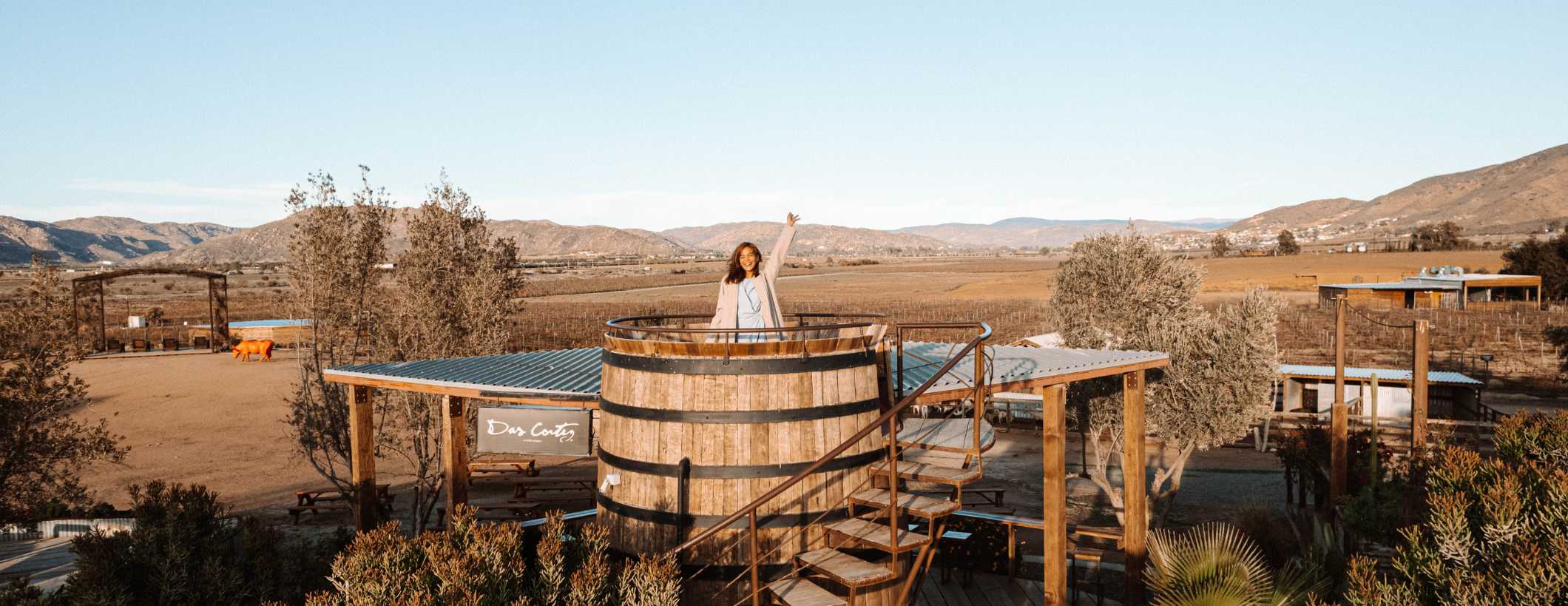

Valle de Guadalupe, situated in the northern region of Baja California, is a hidden gem that beckons travelers with its breathtaking landscapes, burgeoning wine industry, and burgeoning culinary scene. Often referred to as the “Napa Valley of Mexico,” Valle de Guadalupe has gained international recognition for its world-class wines and innovative winemaking techniques. The region is home to over 100 wineries, ranging from small family-run establishments to large, modern vineyards, where visitors can embark on guided tours, attend tastings, and learn about the art of winemaking from passionate local vintners.
The allure of Valle de Guadalupe extends beyond its vineyards, as the region has also emerged as a culinary destination in its own right. The valley boasts an array of farm-to-table restaurants and innovative eateries, many of which are helmed by acclaimed chefs who celebrate the region’s rich agricultural bounty and incorporate locally sourced ingredients into their dishes. This fusion of traditional Mexican flavors and contemporary culinary techniques has given rise to a unique gastronomic movement, known as Baja Med cuisine, which has put Valle de Guadalupe on the map for food enthusiasts worldwide.
The stunning natural beauty of Valle de Guadalupe provides a serene backdrop for a range of outdoor activities, allowing travelers to explore the region’s diverse landscapes at their leisure. Visitors can hike or bike through the rolling hills, take leisurely strolls through the vineyards, or even embark on horseback riding adventures to fully appreciate the picturesque surroundings. The nearby coastline of the Pacific Ocean and the Sea of Cortez also offers opportunities for water-based activities, such as surfing, snorkeling, and whale watching, allowing travelers to combine their wine country experience with a taste of Baja California’s coastal attractions.
Valle de Guadalupe offers a variety of accommodations to suit different preferences and budgets, from luxurious boutique hotels and charming bed and breakfasts to eco-friendly glamping sites and vacation rentals. The region’s tranquil atmosphere, combined with its warm hospitality and focus on sustainability, creates a truly unique and immersive experience for visitors.
Queretaro


Queretaro, a charming colonial city located in the heart of Mexico, is a captivating destination that offers travelers a unique blend of history, culture, and natural beauty. As a UNESCO World Heritage Site, the historic center of Queretaro is a well-preserved example of Spanish colonial architecture, with its narrow cobblestone streets, colorful facades, and elegant plazas. Visitors can explore the city’s many churches, museums, and historic mansions, such as the Santa Rosa de Viterbo Church and the Casa de la Marquesa, which showcase the region’s rich heritage and artistic legacy.
The cultural offerings of Queretaro extend beyond its historic core, with a thriving arts scene that includes galleries, theaters, and cultural centers. The city is home to several renowned festivals, such as the Hay Festival Queretaro and the Festival Internacional de Cine de Queretaro, which celebrate literature, cinema, and the performing arts. These events, along with the city’s vibrant street life and lively markets, provide visitors with an authentic taste of Mexican culture and traditions.
Queretaro is also a gateway to the picturesque Sierra Gorda, a mountainous region that boasts a diverse array of landscapes, from lush forests and crystal-clear rivers to dramatic cliffs and deep canyons. The Sierra Gorda Biosphere Reserve, a UNESCO World Heritage Site, offers a wealth of outdoor activities for nature enthusiasts, including hiking, birdwatching, and camping. Within the reserve, travelers can also explore the Franciscan missions, a series of 18th-century churches that showcase the region’s unique blend of Spanish and indigenous artistic styles.
The city’s culinary scene is another reason why travelers should visit Queretaro. With a diverse range of dining options that showcase traditional Mexican flavors and innovative international cuisine, Queretaro offers something to satisfy every palate. The city is also part of the Ruta del Queso y Vino, a wine and cheese route that winds through the picturesque countryside, where visitors can sample locally produced wines and artisanal cheeses at various vineyards and farms.
With its rich history, vibrant culture, and stunning natural surroundings, Queretaro is an ideal destination for travelers seeking an authentic, off-the-beaten-path experience in the heart of Mexico. The city’s warm hospitality and range of attractions, from its well-preserved colonial architecture to its thriving arts scene and diverse culinary offerings, make Queretaro a must-visit destination for those looking to discover the many treasures of this fascinating country.
Monterrey


Monterrey, the third-largest city in Mexico, is an enthralling destination that offers travelers a unique blend of urban sophistication, natural beauty, and rich cultural heritage. Often referred to as the “Sultan of the North,” Monterrey boasts a striking skyline dominated by the iconic Cerro de la Silla mountain, which serves as a stunning backdrop for the city’s modern architecture and bustling streets.
One of Monterrey’s most appealing features is its abundance of green spaces and natural attractions, which provide a welcome respite from the urban landscape. The Parque Fundidora, a former steel foundry transformed into a sprawling urban park, is an oasis of tranquility where visitors can stroll through lush gardens, explore art installations, or rent a paddleboat on the serene lake. Another must-visit site is the Parque Ecologico Chipinque, situated within the Cumbres de Monterrey National Park, which offers a range of outdoor activities, such as hiking, mountain biking, and birdwatching, as well as breathtaking views of the city below.
Monterrey’s rich history and cultural heritage can be explored through its numerous museums, galleries, and historic sites. The Museo del Palacio showcases the region’s history, from prehistoric times to the present day, while the MARCO, Museo de Arte Contemporaneo, features an impressive collection of modern and contemporary art. The city is also home to several notable architectural landmarks, such as the striking Faro del Comercio and the Basílica de Nuestra Señora del Roble.
The culinary scene in Monterrey is another reason for travelers to visit this dynamic city. Known for its hearty, meat-centric dishes, such as the famous cabrito and carne asada, Monterrey offers an authentic taste of Northern Mexican cuisine. The city is also home to a growing number of innovative restaurants and bars, where chefs and mixologists are putting their own contemporary twist on traditional flavors.
Monterrey’s vibrant nightlife, with its lively bars, clubs, and live music venues, ensures that there’s always something happening after the sun goes down. The city also hosts several cultural events and festivals throughout the year, such as the Festival Internacional Santa Lucia and the Festival Internacional de Cine de Monterrey, which provide opportunities for visitors to immerse themselves in the local arts scene.
Puebla


Puebla, a historic city located in the heart of Mexico, is a captivating destination that offers travelers a unique blend of rich cultural heritage, stunning architectural beauty, and mouthwatering gastronomy. As the fourth-largest city in Mexico, Puebla is home to a UNESCO World Heritage-listed historic center, characterized by its narrow cobblestone streets, vibrant Baroque architecture, and beautifully preserved colonial buildings. One of the city’s most iconic landmarks is the stunning Puebla Cathedral, an impressive 16th-century structure that dominates the skyline with its soaring bell towers and ornate façade.
The city of Puebla is also renowned for its Talavera pottery, a centuries-old ceramic art form that has its roots in the Spanish and Arabic traditions. Visitors can explore the numerous workshops and studios scattered throughout the city, where skilled artisans create intricate, hand-painted designs on everything from tiles and dishware to murals and sculptures. The city’s thriving arts scene extends beyond ceramics, with galleries, museums, and cultural centers showcasing a diverse range of artistic expressions, from contemporary installations to indigenous crafts.
Puebla’s gastronomic scene is another reason why travelers should visit this enchanting city. Recognized as one of Mexico’s culinary capitals, Puebla is the birthplace of some of the country’s most iconic dishes, such as mole poblano, chiles en nogada, and cemitas. Food enthusiasts will delight in the city’s many traditional markets, street food vendors, and fine dining establishments, which offer an authentic taste of Puebla’s diverse and flavorful cuisine.
In addition to its cultural and culinary offerings, Puebla is also an ideal base for exploring the natural beauty and fascinating archaeological sites of the surrounding region. The nearby Popocatepetl and Iztaccihuatl volcanoes offer a range of outdoor activities, such as hiking, mountaineering, and birdwatching, while the ancient city of Cholula, with its awe-inspiring Great Pyramid of Cholula, provides a fascinating glimpse into Mexico’s pre-Hispanic past.
Customized Mexico tours
I customize tours in Mexico for all traveler types! Get in touch with my office at +52 473 171 5259 via Whatsapp and get a quote. Simple prices, no hidden costs.
⛰️ Popular attractions in Mexico
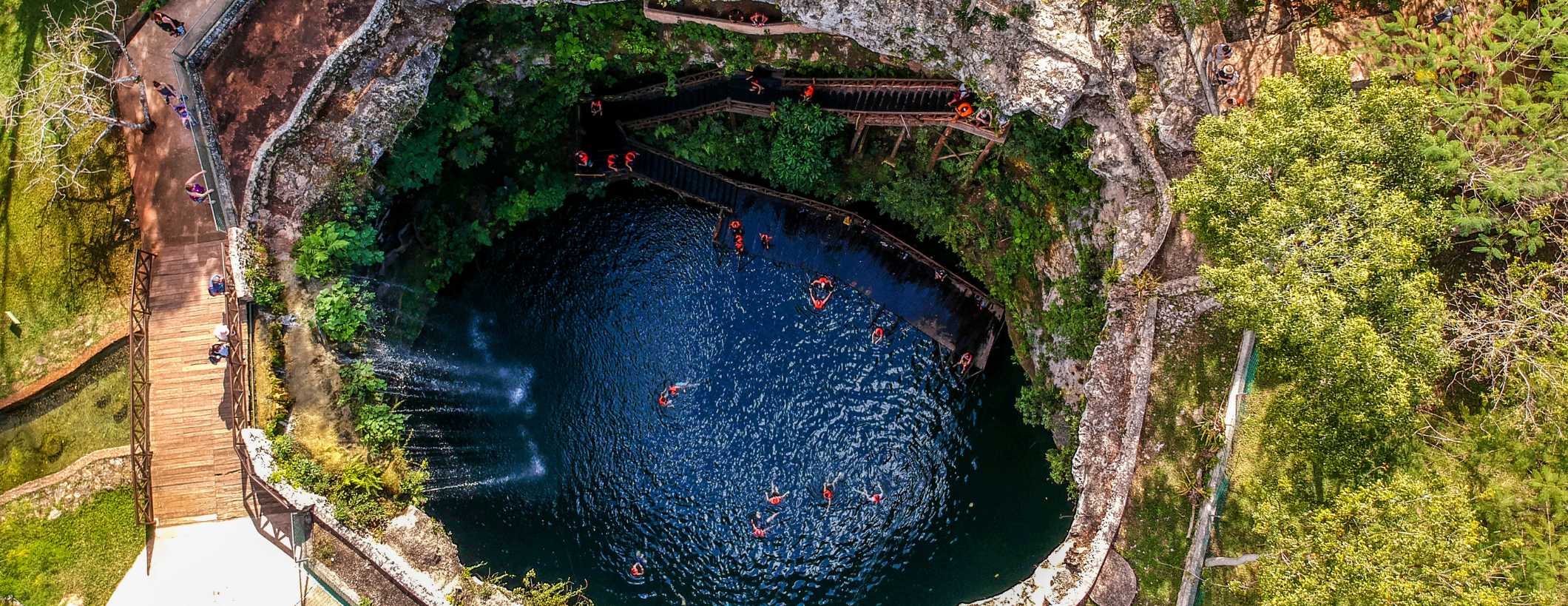

- Chichen Itza: One of the most famous ancient Mayan cities, Chichen Itza is home to the iconic El Castillo (Kukulkan Pyramid) and other impressive structures. This UNESCO World Heritage Site is a must-visit for its cultural and historical significance.
- Teotihuacan: An ancient Mesoamerican city located near Mexico City, Teotihuacan is renowned for its massive pyramids, including the Pyramid of the Sun and the Pyramid of the Moon. Wander the Avenue of the Dead and explore this UNESCO-listed archaeological site.
- Palenque: Set amidst lush jungle in Chiapas, Palenque is an ancient Mayan city known for its intricate carvings and well-preserved structures, including the Temple of Inscriptions and the Palace. This UNESCO World Heritage Site is a must-visit for history and archaeology enthusiasts.
- Cenote Ik Kil: Located near Chichen Itza, this stunning natural sinkhole filled with crystal-clear water is perfect for swimming and enjoying the surrounding lush vegetation. Cenote Ik Kil is a popular stop for those visiting the nearby Mayan ruins.
- Copper Canyon: A series of massive canyons in the Sierra Madre Occidental mountains, Copper Canyon is larger and deeper than the Grand Canyon in the United States. The Chihuahua al Pacifico Railway (El Chepe) offers a scenic journey through the canyon, with opportunities for hiking, biking, and horseback riding.
- Xcaret Park: A popular eco-archaeological park located in the Riviera Maya, Xcaret offers a range of attractions and activities, including snorkeling, swimming with dolphins, exploring underground rivers, and learning about Mexican culture and history.
- Sumidero Canyon: This dramatic canyon in Chiapas features towering cliffs and the Grijalva River flowing through its base. Visitors can take a boat tour to experience the breathtaking scenery and observe the diverse wildlife, including crocodiles, monkeys, and various bird species.
- Hierve el Agua: A unique natural attraction in Oaxaca, Hierve el Agua features petrified waterfalls and mineral-rich natural pools. The site offers hiking trails, swimming opportunities, and incredible views of the surrounding landscape.
- Sian Ka’an Biosphere Reserve: This UNESCO World Heritage Site in Quintana Roo is a vast protected area encompassing tropical forests, mangroves, and coral reefs. Sian Ka’an is home to a diverse range of flora and fauna and offers activities such as birdwatching, wildlife spotting, and exploring ancient Mayan ruins.
- Isla Mujeres: A beautiful island located off the coast of Cancun, Isla Mujeres is known for its stunning beaches, vibrant marine life, and relaxed atmosphere. The island is perfect for snorkeling, scuba diving, and visiting the MUSA underwater museum.
- Monarch Butterfly Biosphere Reserve: Located in the states of Michoacán and Mexico, this UNESCO World Heritage Site is home to millions of monarch butterflies that migrate from North America. Visitors can witness the incredible sight of these butterflies clustering in the oyamel fir forests between November and March.
- Marieta Islands: Situated off the coast of Nayarit, the Marieta Islands are a protected marine park known for their diverse wildlife and the famous Hidden Beach. Visitors can enjoy activities such as snorkeling, scuba diving, and birdwatching.
🛏️ Mexico hotels and accommodations
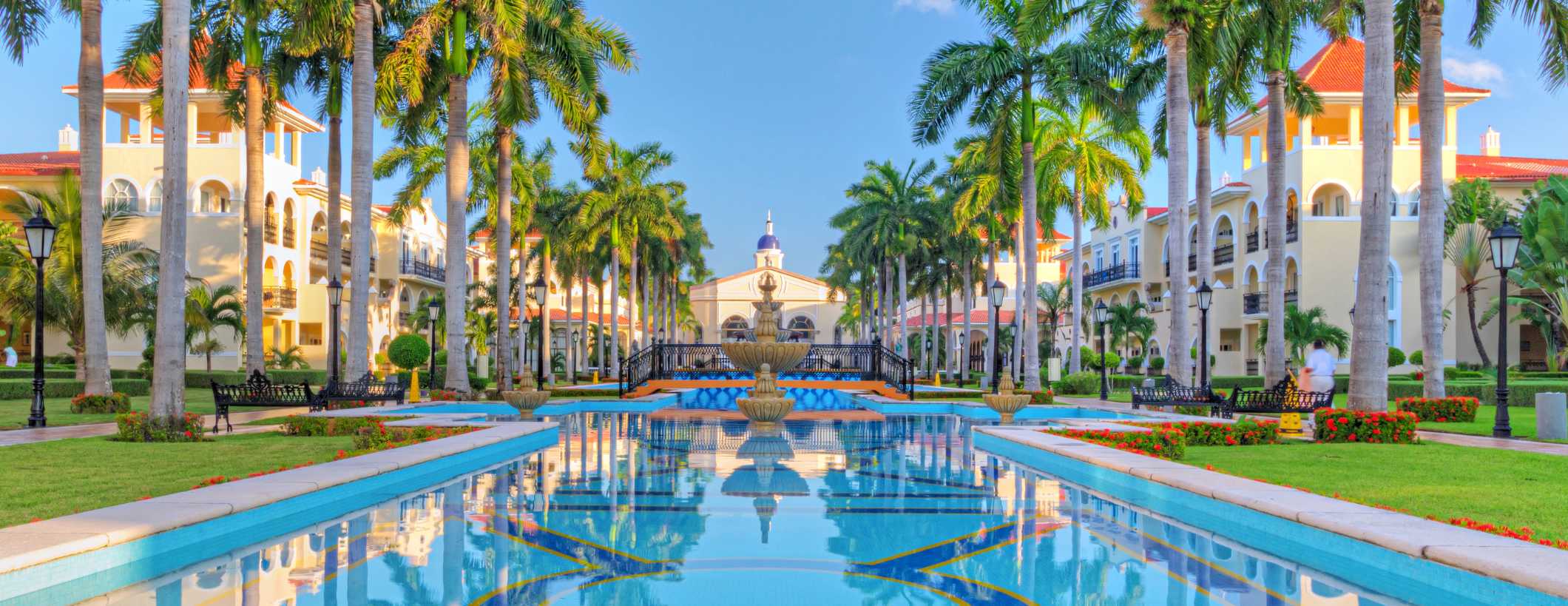

Mexico offers a diverse range of accommodation options to cater to the preferences and budgets of all types of travelers. From luxury resorts to budget-friendly hostels, you can find the perfect place to stay while exploring this vibrant country.
Five-star hotels and luxury resorts can be found in popular tourist destinations like Cancun, Los Cabos, and Riviera Maya. These opulent accommodations offer world-class amenities, including private beaches, infinity pools, and fine dining experiences. Prices for these high-end properties typically range from $300 to $1000 per night, depending on the location and time of year.
Mid-range hotels provide comfort and convenience without the hefty price tag of luxury resorts. These establishments offer amenities such as air conditioning, Wi-Fi, and complimentary breakfast. You can expect to pay between $50 and $150 per night for a mid-range hotel, with prices varying based on location and season.
Boutique hotels are a popular option for travelers seeking a unique and personalized experience. These smaller, independently owned properties often feature stylish decor and exceptional service. Prices for boutique hotels in Mexico can range from $100 to $300 per night.
For budget-conscious travelers, hostels and guesthouses offer affordable options without compromising on comfort. These accommodations typically provide dormitory-style lodging or private rooms with shared bathrooms. Prices for hostels and guesthouses range from $10 to $40 per night, making them an excellent choice for backpackers and solo travelers.
Another popular option in Mexico is vacation rentals, which include apartments, condos, and private homes. These accommodations provide the opportunity to experience life like a local and are perfect for longer stays or larger groups. Prices for vacation rentals vary widely depending on location, property size, and amenities, but you can expect to pay anywhere from $50 to $300 per night.
For those who prefer to be closer to nature, Mexico offers numerous camping and glamping options. Campsites can be found in national parks, beachside locations, and even within the grounds of luxury resorts. Camping prices range from $5 to $20 per night for basic sites, while glamping options with more amenities can cost anywhere from $50 to $200 per night.
No matter your budget or travel style, Mexico’s diverse accommodation options ensure that every visitor can find the perfect place to rest their head.
🍲 What to eat in Mexico


- Tacos: A quintessential Mexican dish, tacos consist of a soft corn tortilla filled with various ingredients such as grilled meats, vegetables, cheese, and salsas. Popular varieties include tacos al pastor (marinated pork), carne asada (grilled beef), and barbacoa (slow-cooked meat).
- Tamales: A traditional Mesoamerican dish made from masa (corn dough) filled with a variety of ingredients, such as meats, cheeses, fruits, or vegetables. The filled masa is wrapped in a corn husk or banana leaf and steamed until cooked.
- Pozole: A hearty soup made from hominy (dried maize kernels), meat (typically pork or chicken), and a flavorful broth, garnished with toppings like lettuce, radish, onion, lime, and avocado.
- Chiles en nogada: This festive dish consists of poblano chiles stuffed with a mixture of minced meat, fruits, and spices, topped with a creamy walnut sauce (nogada), and garnished with pomegranate seeds, representing the colors of the Mexican flag.
- Enchiladas: Rolled corn tortillas filled with meat, cheese, or vegetables, topped with a chili-based sauce, and baked. Popular variations include enchiladas suizas (with a creamy tomatillo sauce), enchiladas rojas (with a red tomato and chili sauce), and enchiladas verdes (with a green tomatillo and chili sauce).
- Guacamole: A classic Mexican dip made from ripe avocados, lime juice, tomato, onion, cilantro, and chili peppers, often served with tortilla chips or as a topping for various dishes.
- Mole: A complex sauce made from a blend of chilies, spices, chocolate, and other ingredients, typically served over meat or vegetables. There are many regional variations, such as mole poblano (from Puebla) and mole negro (from Oaxaca).
- Chilaquiles: A popular breakfast dish consisting of fried corn tortilla pieces simmered in a red or green salsa, often topped with shredded chicken, cheese, sour cream, and sliced onions.
- Ceviche: A dish made from raw fish or seafood marinated in lime juice, chili peppers, and other seasonings, served with chopped vegetables like tomatoes, onions, and cilantro. Variations of ceviche can be found along Mexico’s coastal regions.
- Elote: A popular street food, elote is corn on the cob, grilled or boiled, and then coated with mayonnaise, cotija cheese, chili powder, and lime juice.
- Sopes: Thick corn masa patties topped with ingredients like beans, shredded meat, lettuce, tomato, cheese, and salsas. They resemble small, thick tortillas with raised edges to hold the toppings.
- Cochinita pibil: A Yucatecan dish made from slow-roasted marinated pork, traditionally cooked in a pit lined with banana leaves. The pork is marinated in a mix of achiote paste, sour orange juice, and spices.
- Carnitas: Slow-cooked pork, typically cooked in its own fat, resulting in tender and flavorful meat. Carnitas are often served in tacos, tortas, or with rice and beans.
- Quesadillas: Corn or flour tortillas filled with cheese and other ingredients such as meat, vegetables, or mushrooms, then folded in half and cooked until the cheese melts. Quesadillas can be grilled, fried, or baked.
- Menudo: A traditional Mexican soup made with beef tripe, hominy, and a chili pepper-based broth. Menudo
💲 Mexico travel costs
Hotel prices
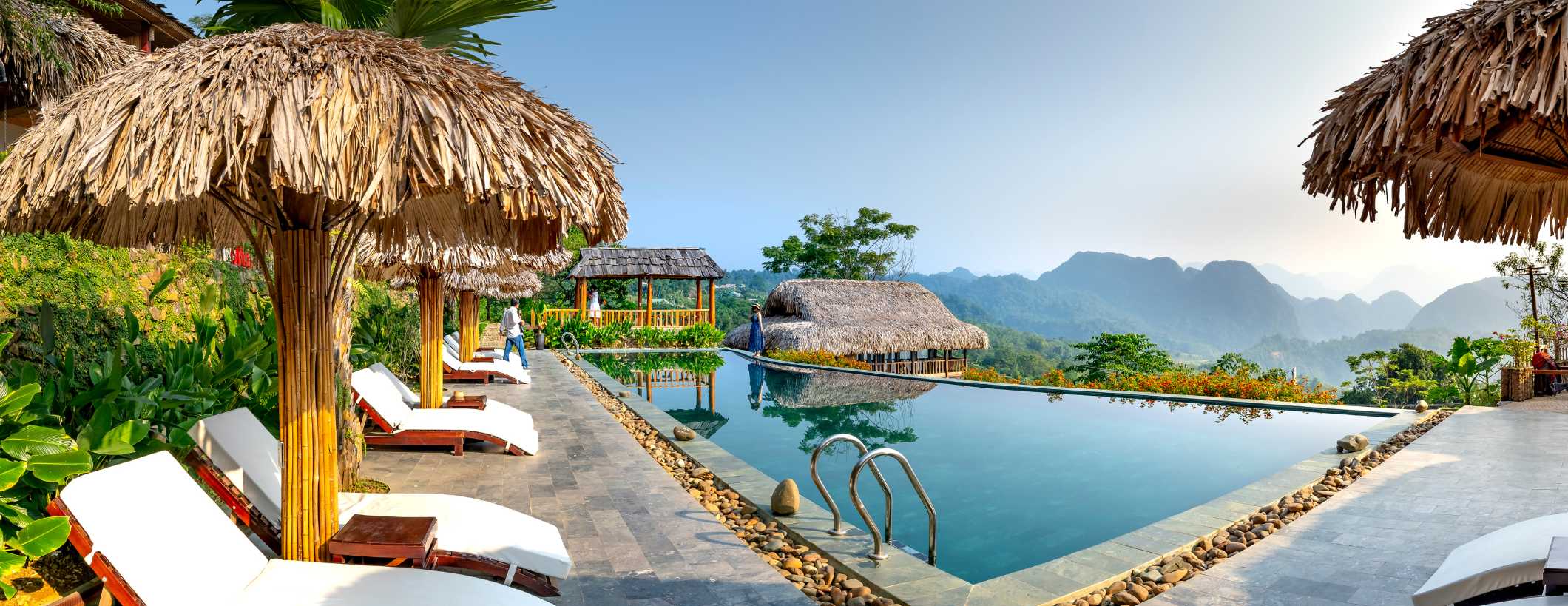

Hotel prices in Mexico vary greatly depending on the type of accommodation, location, and time of year. From luxury resorts to budget-friendly hostels, there is something to suit every traveler’s needs and preferences.
Luxury hotels and resorts, often found in popular tourist destinations such as Cancun, Los Cabos, and Riviera Maya, offer high-end amenities and exceptional service. Prices for these upscale accommodations generally range from $300 to $1000 per night, with rates fluctuating based on factors like the season and location.
Mid-range hotels are an affordable alternative for those seeking comfort without the premium price tag. These establishments offer amenities like air conditioning, Wi-Fi, and complimentary breakfast. You can expect to pay between $50 and $150 per night for a mid-range hotel, with prices varying by region and time of year.
Budget accommodations like hostels and guesthouses cater to cost-conscious travelers. These options typically provide dormitory-style lodging or private rooms with shared bathrooms, with prices ranging from $10 to $40 per night. This makes them an attractive choice for backpackers and solo travelers.
Keep in mind that hotel prices in Mexico can be influenced by factors such as local events, holidays, and demand. Booking your accommodation well in advance and being flexible with your travel dates can help you secure the best deals and enjoy a memorable stay in this captivating country.
Food prices
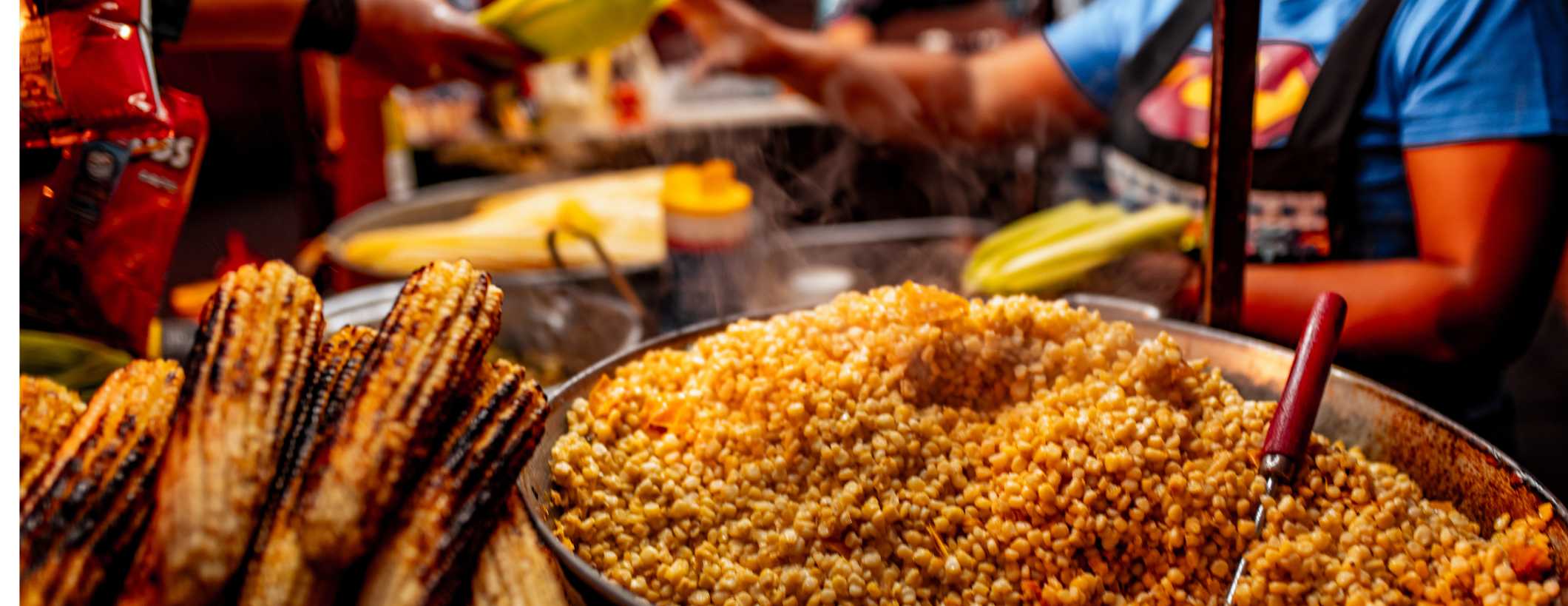

Food prices in Mexico can vary significantly depending on the type of dining experience you are seeking and the location. However, the country is well-known for its delicious and affordable cuisine, making it a food lover’s paradise.
Street food is an integral part of Mexican culture and offers a budget-friendly way to enjoy authentic local dishes. Tacos, tamales, and quesadillas can be found at street vendors and small family-run establishments for as little as $0.50 to $2 per item. These informal eateries provide a unique opportunity to experience the rich flavors and traditions of Mexican cuisine without breaking the bank.
Mid-range restaurants cater to those seeking a more formal dining experience, with prices ranging from $10 to $25 per person for a meal, including appetizers, main courses, and beverages. These establishments often offer a mix of traditional Mexican dishes and international cuisine, ensuring a diverse selection of options for diners.
High-end restaurants and fine dining establishments can be found in popular tourist destinations and larger cities like Mexico City, Guadalajara, and Monterrey. These upscale venues often feature creative menus crafted by renowned chefs, offering a refined gastronomic experience. Prices at high-end restaurants can range from $30 to $100 per person, depending on the specific location and menu.
Regardless of your budget, Mexico’s diverse food scene ensures that you can enjoy a delicious and satisfying meal at any price point.
Attraction and tour costs


Tour and excursion prices in Mexico can vary widely depending on the type of activity, location, duration, and the level of service provided. However, the country offers a plethora of experiences for travelers with different budgets and interests.
For budget-conscious travelers, there are affordable group tours available, covering popular sites and activities like visiting ancient ruins, exploring local markets, and city walking tours. These options usually cost between $10 and $40 per person and often include an experienced guide, transportation, and entrance fees.
Mid-range tours and excursions cater to those who prefer a more personalized experience, often with smaller group sizes and additional inclusions. Prices for these options typically range from $50 to $150 per person and may feature activities like guided hikes, cooking classes, or snorkeling trips.
Luxury tours and excursions provide a premium experience, with private guides, customized itineraries, and top-notch service. These high-end options often cost between $200 and $500 per person and can include exclusive experiences like private yacht charters, helicopter tours, or wine tasting at boutique wineries.
Seasonal factors and demand can also influence tour and excursion prices in Mexico, so it is advisable to book your activities in advance to secure the best rates. No matter your budget, Mexico offers a vast array of captivating experiences that cater to every type of traveler.
Transportation costs


Transportation costs in Mexico can vary depending on the mode of transport, distance, and location. The country offers a range of options to suit different budgets and preferences, making it easy for travelers to explore its diverse landscapes and vibrant cities.
Public transportation, such as buses and metro systems, is an affordable and efficient way to navigate urban areas like Mexico City and Guadalajara. Local buses typically cost between $0.50 and $1 per ride, while metro fares range from $0.30 to $0.50 per trip.
Long-distance buses are a popular and cost-effective mode of transportation for traveling between cities and regions. Prices for bus tickets vary depending on the distance and level of service, with first-class and luxury buses offering more amenities, such as reclining seats and onboard restrooms. Fares for long-distance buses range from $10 to $50, depending on the route and bus class.
Taxis and ride-sharing services like Uber are widely available in major cities and tourist destinations. Fares can vary based on distance and time of day, but generally, short taxi rides within city limits cost between $3 and $10.
Domestic flights are a convenient option for covering longer distances within Mexico. Prices for one-way flights can range from $40 to $200, depending on the route, airline, and booking window.
Car rentals are also available for those who prefer the flexibility of self-driving. Rental rates typically start at $20 per day for a basic vehicle, with additional costs for insurance and fuel. Overall, Mexico’s diverse transportation options cater to a wide range of budgets and travel styles.
Currency Exchange


Although the US dollar is accepted in many tourist areas, having pesos ensures that you can pay for goods and services in local establishments and often get better exchange rates.
The best way to exchange money in Mexico is to use an ATM or “cajero automático” from a reputable bank. ATMs are widely available in urban areas, tourist destinations, airports, and shopping centers. By withdrawing pesos directly from your bank account using an ATM, you usually receive a more favorable exchange rate compared to currency exchange offices or hotels. However, be aware of any fees that your bank might charge for international transactions or ATM withdrawals.
Another option is to exchange money at a currency exchange office, called “casa de cambio.” These businesses can be found in airports, tourist areas, and city centers. While the exchange rates at casas de cambio may be slightly less favorable than those at ATMs, they still tend to be better than those offered by hotels or other commercial establishments.
It’s advisable to exchange a small amount of money upon arrival in Mexico to cover immediate expenses, then withdraw additional funds as needed from ATMs during your stay. Always be cautious when using ATMs or exchanging money, and opt for well-lit, secure locations to minimize the risk of theft or fraud.
ATM withdrawals


TM withdrawals in Mexico are a convenient and cost-effective way for travelers to obtain local currency (Mexican pesos) during their visit. Utilizing ATMs from reputable banks often provides better exchange rates compared to currency exchange offices or hotels. It is essential to be aware of potential withdrawal fees and the best banks to withdraw from to minimize costs.
Some of the major banks in Mexico with widespread ATM networks include Banorte, BBVA Bancomer, HSBC, Santander, and Scotiabank. These banks’ ATMs are commonly found in airports, shopping centers, urban areas, and tourist destinations. When using an ATM from one of these banks, you are more likely to receive a favorable exchange rate and a higher level of security.
When withdrawing money from an ATM in Mexico, you may encounter fees charged by both your home bank and the Mexican bank operating the ATM. These fees can include international transaction fees, currency conversion fees, and withdrawal fees. It is crucial to check with your bank beforehand to understand the specific charges that may apply to your account when using ATMs abroad.
To minimize withdrawal fees, consider withdrawing larger amounts less frequently, as long as it is safe to carry the cash. Some banks also offer partnerships or alliances with international banks, which can reduce or eliminate ATM fees when using specific networks.
Before traveling to Mexico, it’s a good idea to inform your bank of your travel plans to ensure uninterrupted access to your account and avoid triggering any fraud alerts. Additionally, always prioritize using ATMs in well-lit, secure locations, such as bank branches or shopping centers, to minimize the risk of theft or ATM skimming devices.
Credit cards


Credit cards are widely accepted in Mexico, particularly in urban areas, tourist destinations, and larger establishments such as hotels, restaurants, and shops. The most commonly accepted credit cards include Visa, Mastercard, and American Express, with Visa and Mastercard enjoying the broadest acceptance. However, it is essential to have cash on hand, particularly Mexican pesos, when visiting smaller businesses or rural areas, as they may not accept credit card payments.
When using credit cards in Mexico, be aware of potential fees that may apply, such as foreign transaction fees or currency conversion fees. These fees are typically charged by your credit card issuer and can range from 1% to 3% of the transaction amount. To minimize these costs, consider using a credit card that does not charge foreign transaction fees or offers favorable exchange rates.
It is crucial to inform your credit card issuer of your travel plans before departing to ensure that your card will not be blocked due to suspected fraud. Additionally, make sure to familiarize yourself with your credit card’s PIN, as some businesses in Mexico may require a PIN for credit card transactions, particularly when using a chip-and-PIN card.
While credit cards offer a convenient way to pay for goods and services in Mexico, it is always a good idea to carry a mix of payment methods, including cash and a debit card for ATM withdrawals. This will help you avoid potential issues with card acceptance and ensure that you can cover your expenses regardless of the situation.
Tipping


💵 Money-saving tips
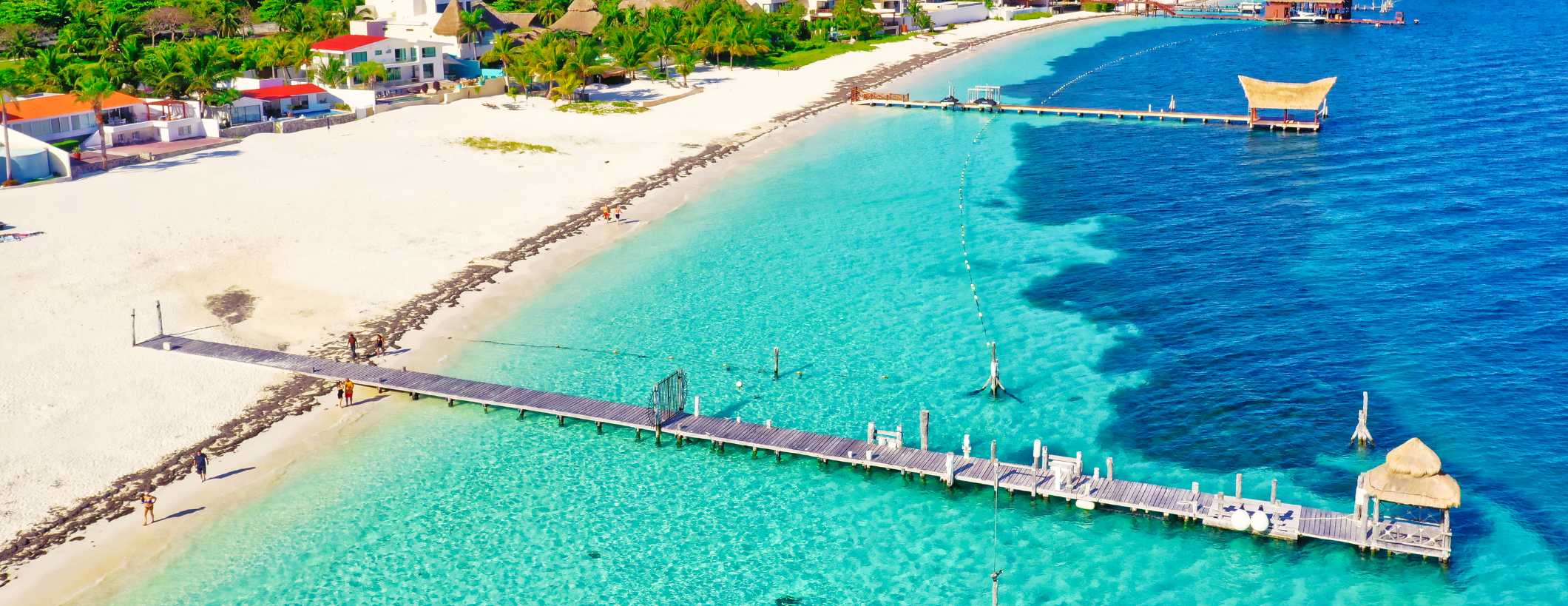

- Travel during the off-peak season: Mexico’s high season typically runs from December to April, with increased prices for flights and accommodations. Save money by traveling during the off-peak season, when you’ll likely find better deals on airfare and lodging.
- Use local transportation: Opt for local buses, colectivos, or the metro instead of taxis or private transfers. Public transportation is generally more affordable and allows you to experience the local culture more authentically.
- Eat at local markets and street food stalls: Mexican cuisine is renowned for its delicious street food, and you’ll find some of the best and most affordable meals at local markets and street food stalls. You’ll not only save money but also enjoy an authentic culinary experience.
- Stay in budget accommodations: Consider staying in hostels, budget hotels, or Airbnb rentals to save on lodging costs. Many of these options offer private rooms and shared amenities, allowing you to enjoy a comfortable stay without breaking the bank.
- Book flights and accommodations in advance: If you have a set travel itinerary, book your flights and accommodations as far in advance as possible to secure the best deals. Be flexible with your travel dates and use search tools to find the cheapest flights.
- Take advantage of free or low-cost attractions: Many of Mexico’s cities offer free or low-cost attractions, such as public parks, museums with free admission days, and historical sites. Research your destination beforehand and plan your itinerary around these budget-friendly options.
- Use a prepaid travel card or credit card with no foreign transaction fees: Avoid incurring foreign transaction fees by using a prepaid travel card or a credit card with no foreign transaction fees. This can help you save on ATM withdrawal fees and currency conversion costs.
- Haggle at local markets: Bargaining is common practice at many local markets and souvenir shops in Mexico. Don’t be afraid to negotiate prices, especially if you’re buying multiple items from the same vendor. Remember to be polite and respectful while haggling.
- Buy a local SIM card: Purchasing a local SIM card upon arrival can save you money on data and calling costs. Many Mexican mobile carriers offer affordable prepaid plans with generous data allowances, allowing you to stay connected without incurring roaming fees.
- Travel with a group: Group trips can help you save on costs by splitting expenses for accommodations, transportation, and even meals. Group discounts are often available for tours and activities, so consider booking as a group to take advantage of these savings.
📱 Useful Mexico travel apps


- Google Maps: A go-to app for navigation, Google Maps provides accurate and updated maps, walking and driving directions, and public transportation information in Mexico. You can download offline maps to use without an internet connection.
- Duolingo: Brush up on your Spanish language skills with Duolingo, an easy-to-use app that offers bite-sized language lessons and interactive exercises. It’s an excellent way to learn essential phrases and improve your conversational abilities before traveling to Mexico.
- XE Currency Converter: This app allows you to quickly and easily convert currencies, providing up-to-date exchange rates between the Mexican peso and your home currency. It’s helpful for managing your budget and making sure you’re getting a fair exchange rate.
- Uber: Uber operates in many Mexican cities and offers a safe, reliable, and convenient transportation option. The app allows you to request a ride, track your driver, and pay securely through your smartphone.
- Moovit: If you’re planning to use public transportation in Mexico, Moovit is a helpful app that provides real-time transit information, including bus and metro schedules, route planning, and live arrival times.
- TripAdvisor: This popular travel app offers user-generated reviews and ratings for hotels, restaurants, and attractions in Mexico. You can use TripAdvisor to discover the best places to visit, eat, and stay during your trip.
- Airbnb: Find unique accommodations in Mexico by using the Airbnb app. You can search for and book private apartments, houses, or even entire villas, often at a more affordable rate than traditional hotels.
- WhatsApp: WhatsApp is widely used in Mexico for messaging and calling. It’s a great way to stay in touch with friends and family back home, as well as communicate with local contacts, such as tour guides or Airbnb hosts.
- iOverlander: Ideal for adventurous travelers and road-trippers, iOverlander is a crowd-sourced app that provides information on campsites, wild camping spots, and other off-the-beaten-path locations throughout Mexico. Users can also share tips, warnings, and recommendations within the app’s community.
- Eat Mexico: Focusing on Mexico’s vibrant food scene, this app offers recommendations and reviews of local restaurants, street food vendors, and markets in various cities. Eat Mexico helps you discover the best traditional and regional dishes while exploring the country.
🈲 Helpful Mexican Spanish phrases


- Hola, ¿cómo estás? (Hello, how are you?): Use this phrase to greet people and ask how they’re doing.
- Por favor (Please): A polite way to ask for something or make a request.
- Gracias (Thank you): Express your gratitude with this simple phrase.
- ¿Dónde está…? (Where is…?): Ask for directions by adding the location you’re looking for after “¿Dónde está…?” (e.g., ¿Dónde está el baño? – Where is the bathroom?).
- ¿Cuánto cuesta? (How much does it cost?): Use this phrase to inquire about the price of an item or service.
- No entiendo (I don’t understand): If you’re having trouble understanding someone, use this phrase to let them know.
- ¿Habla inglés?(Do you speak English?): Ask if someone speaks English to help bridge the language gap.
- Perdón / Disculpe (Excuse me): Use these phrases to get someone’s attention or apologize for a minor inconvenience.
- ¿Puede ayudarme? (Can you help me?): Ask for assistance with this phrase.
- ¿A qué hora…? (At what time…?): Inquire about the time of an event or when something is happening (e.g., ¿A qué hora sale el tren? – At what time does the train leave?).
- ¿Cuál es la contraseña de WiFi? (What’s the WiFi password?): Stay connected by asking for the WiFi password at your accommodation or a public place.
- Me gustaría… (I would like…): Order food or make a request by starting your sentence with “Me gustaría…” (e.g., Me gustaría un café con leche – I would like a coffee with milk).
- ¿Cómo llego a…? (How do I get to…?): Ask for directions to a specific place with this phrase (e.g., ¿Cómo llego al aeropuerto? – How do I get to the airport?).
- ¿Dónde puedo encontrar…? (Where can I find…?): Use this question to ask where you can find a specific item or service (e.g., ¿Dónde puedo encontrar una farmacia? – Where can I find a pharmacy?).
- ¡Salud! (Cheers!): Toast to a great trip with this festive phrase.



